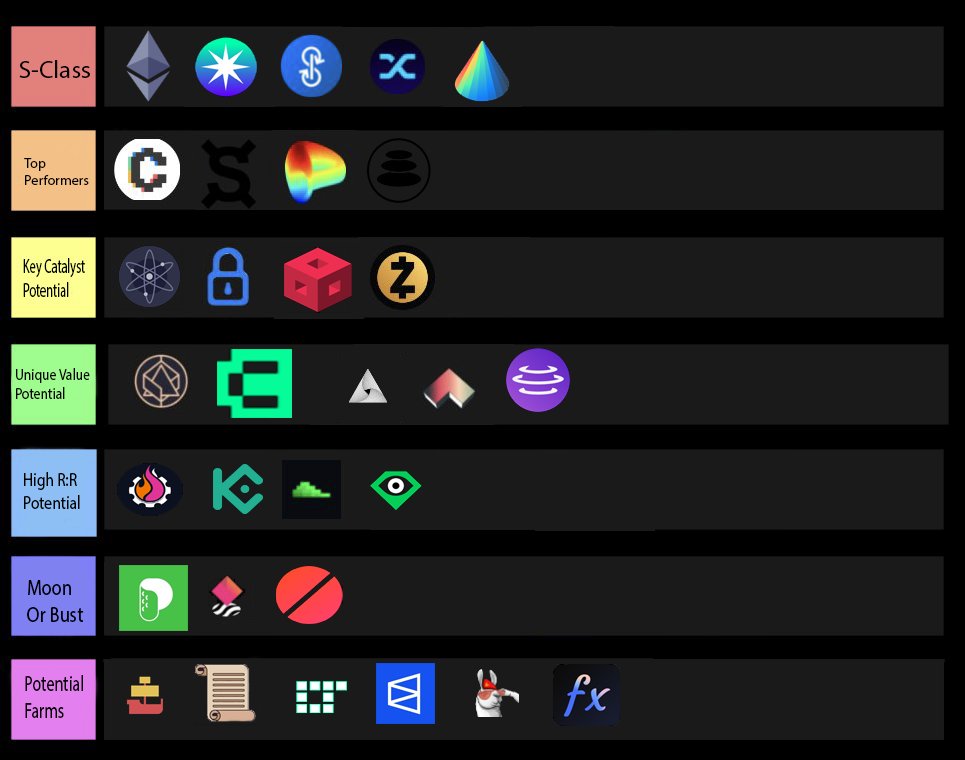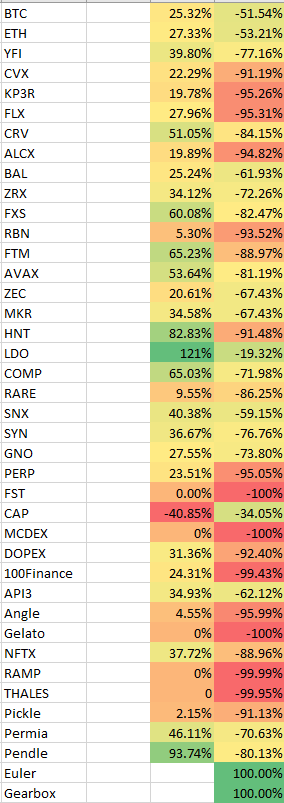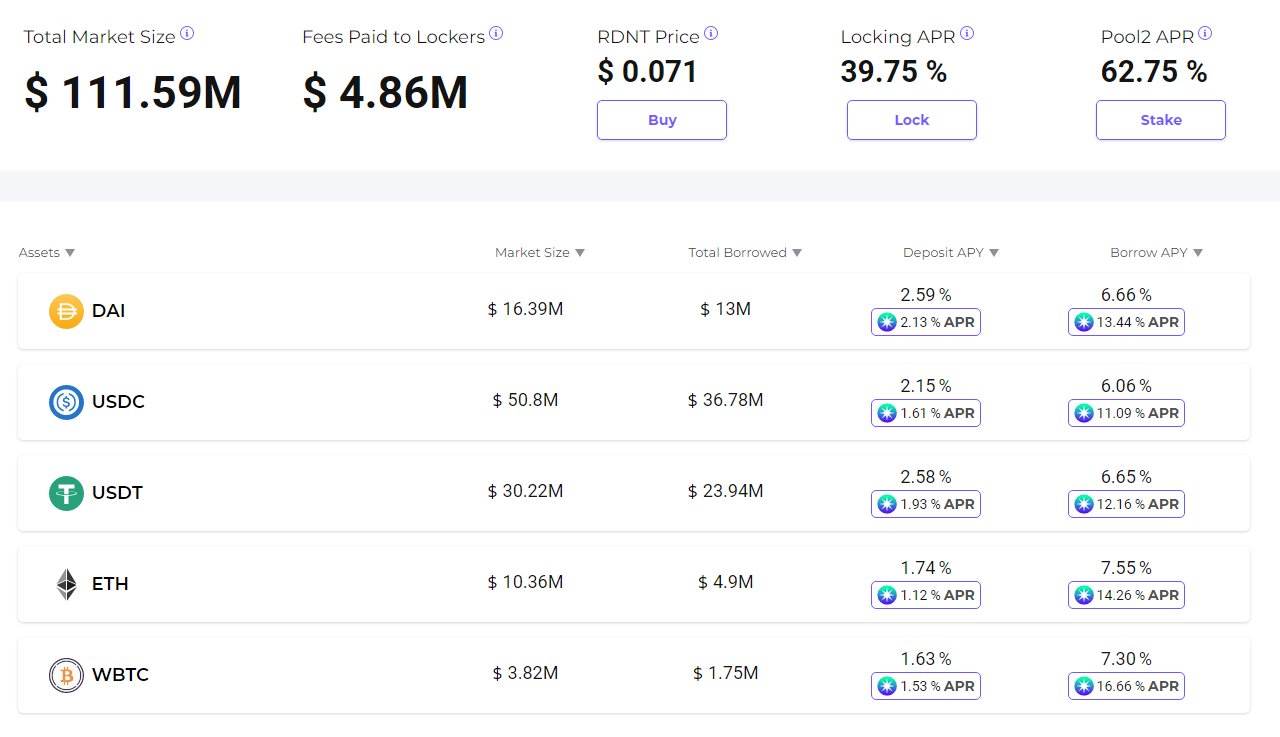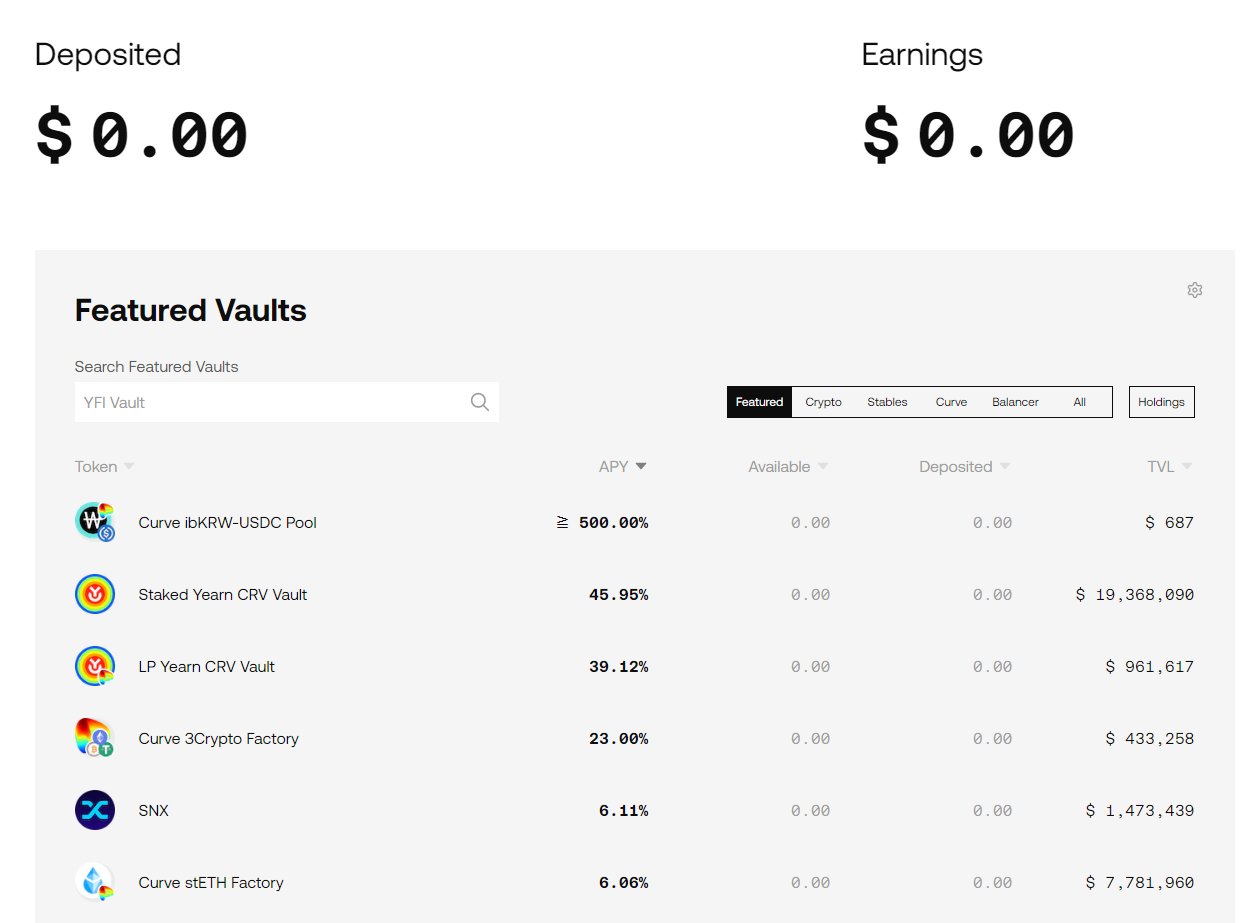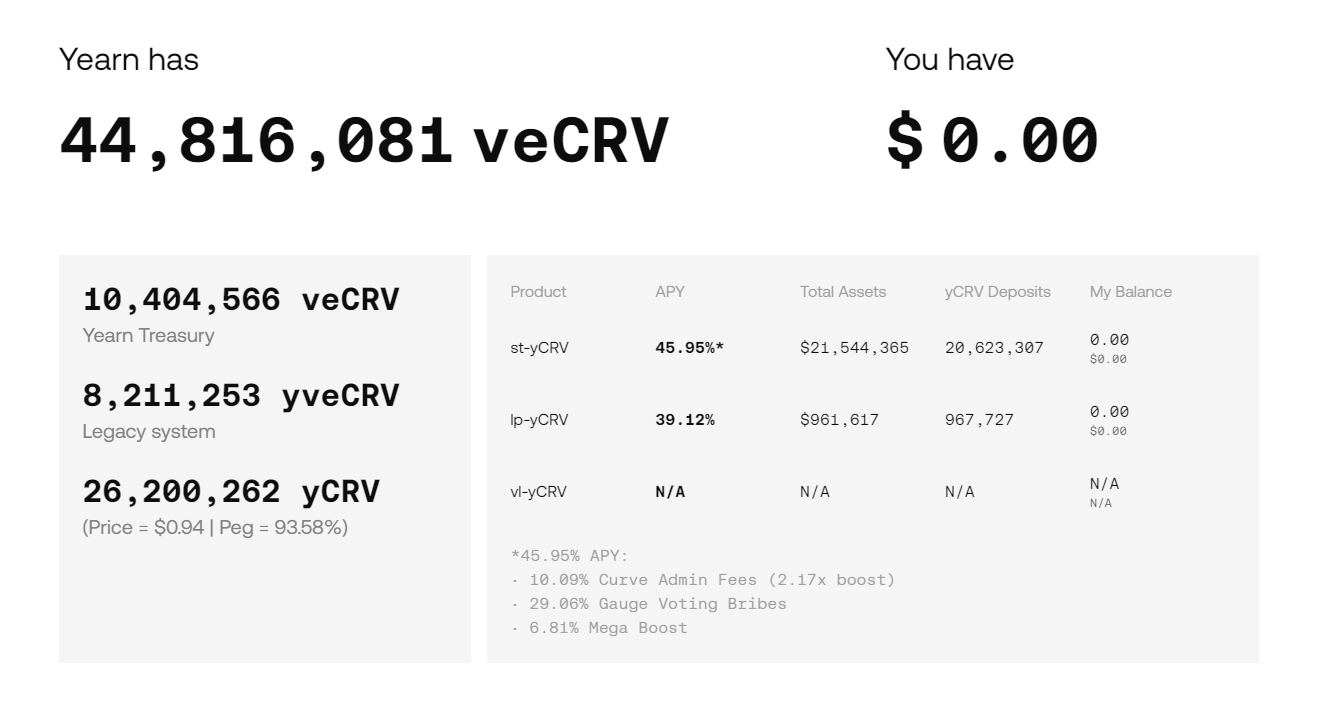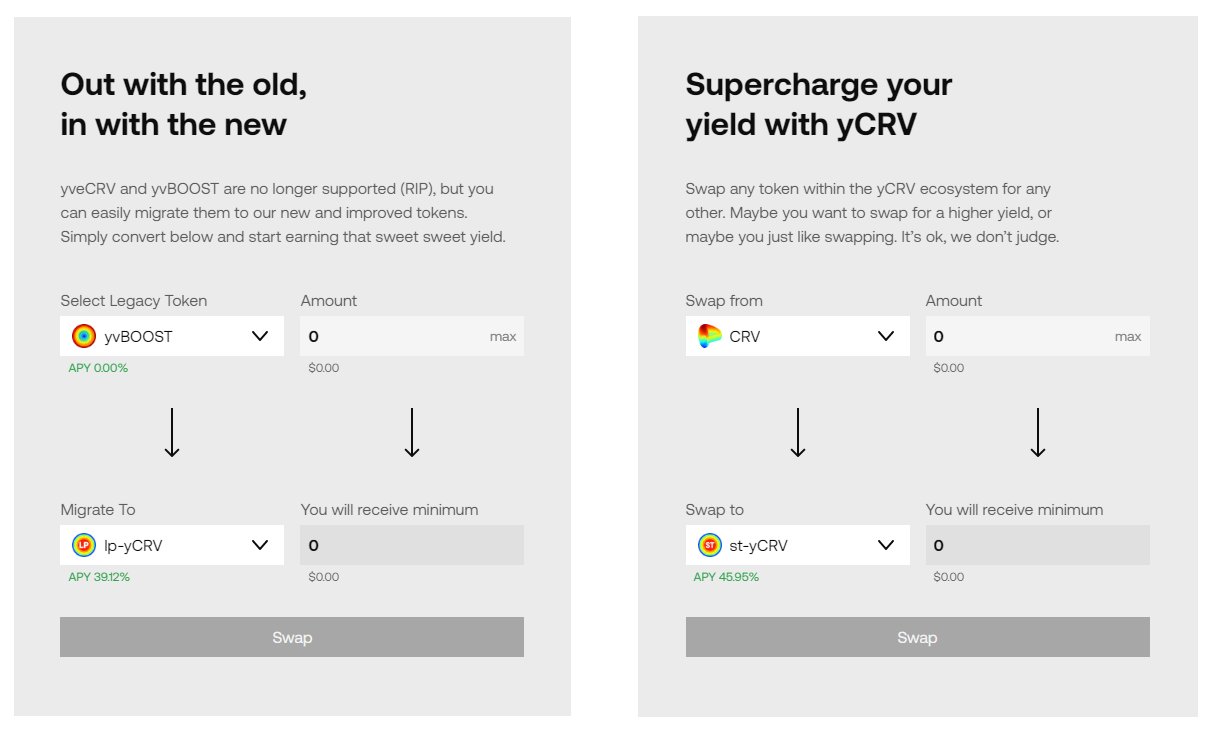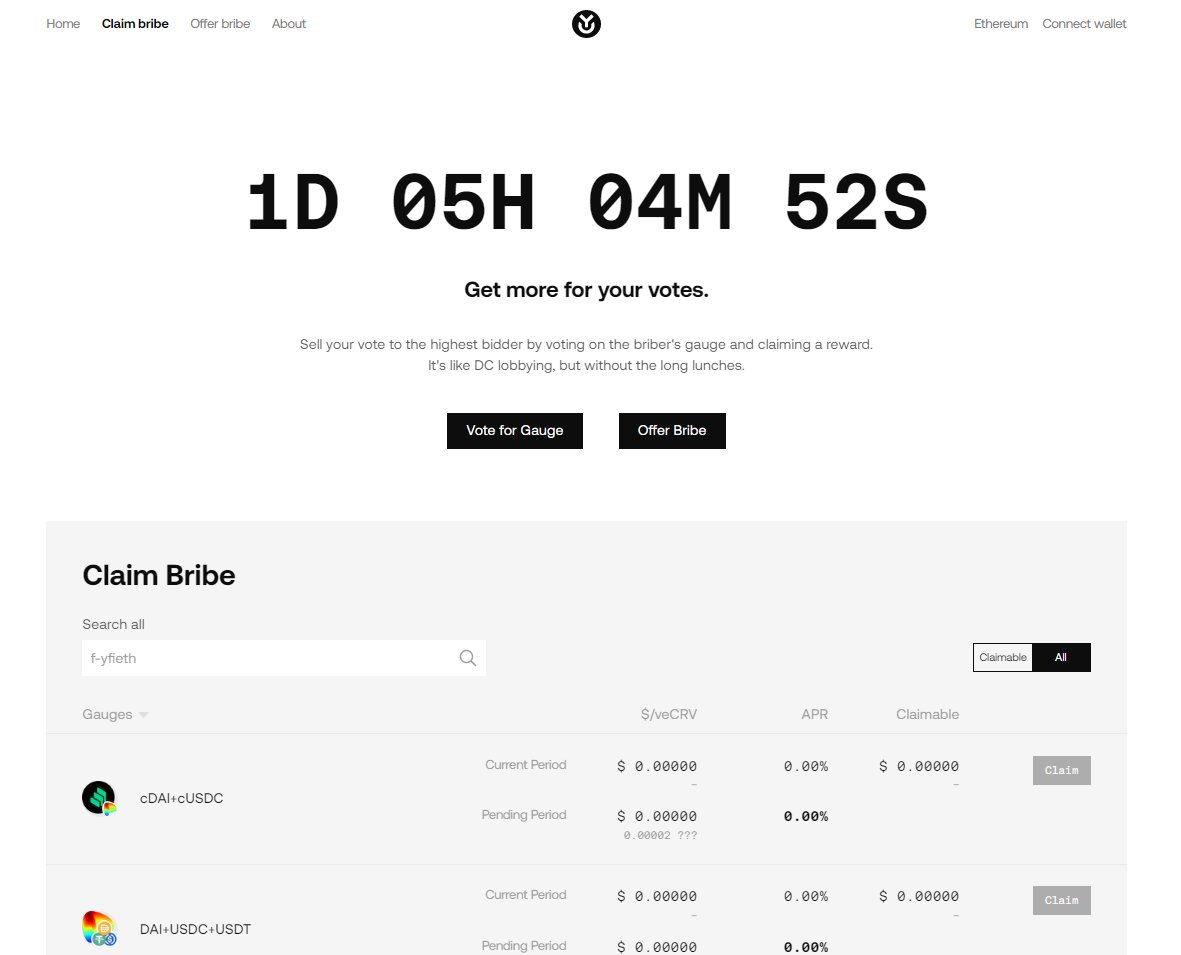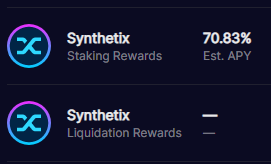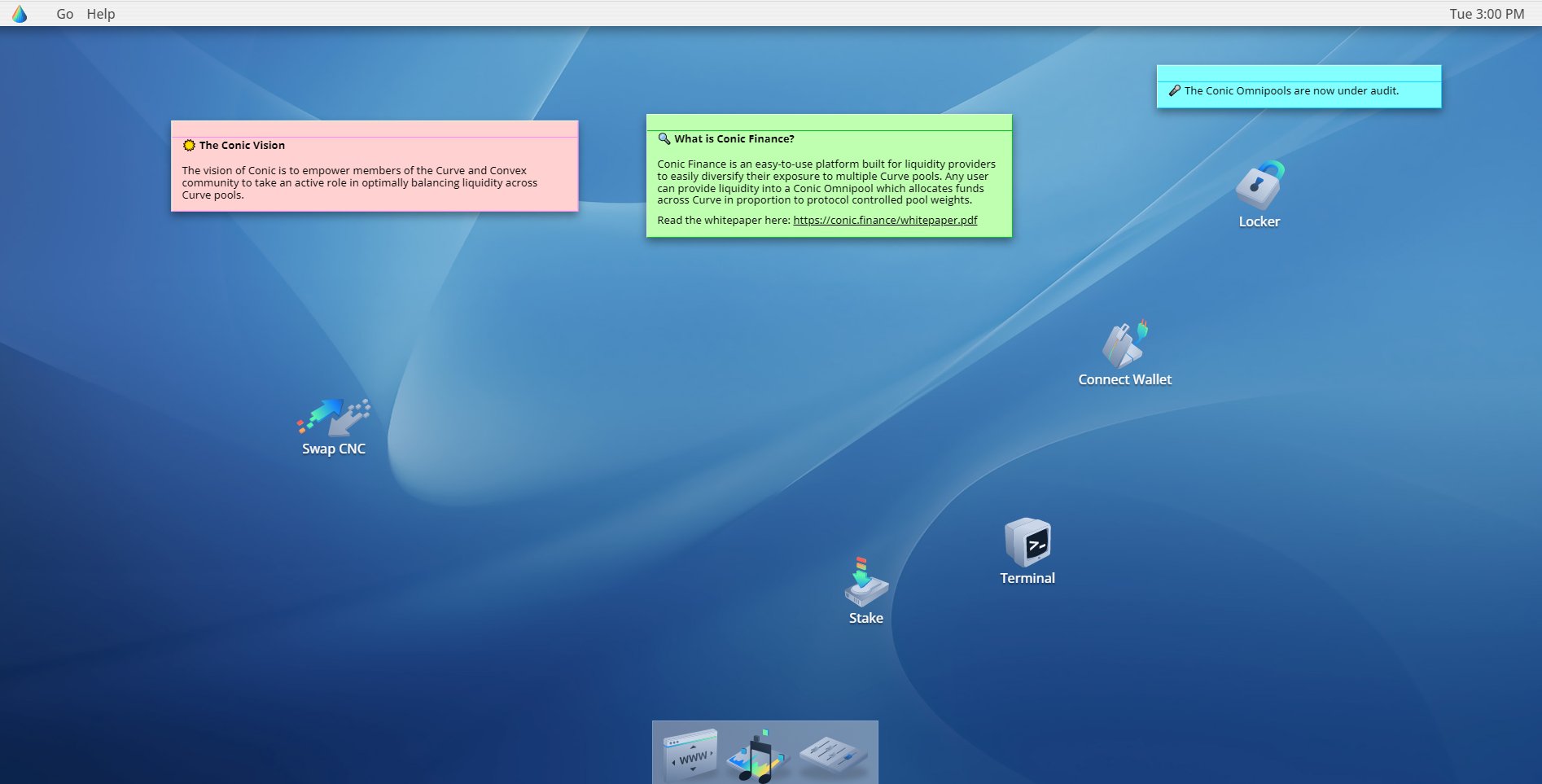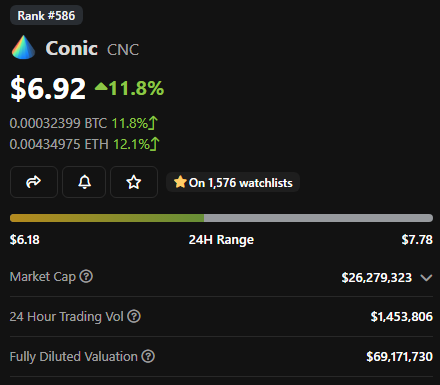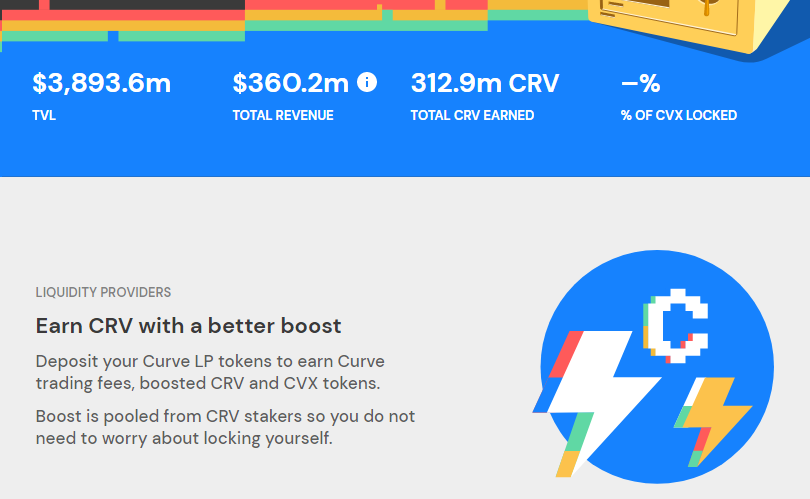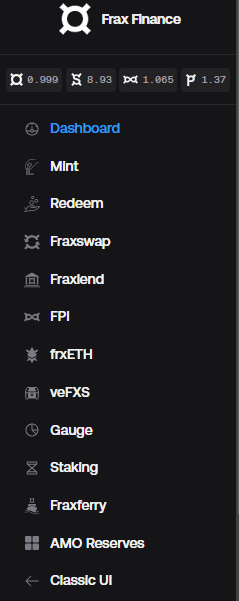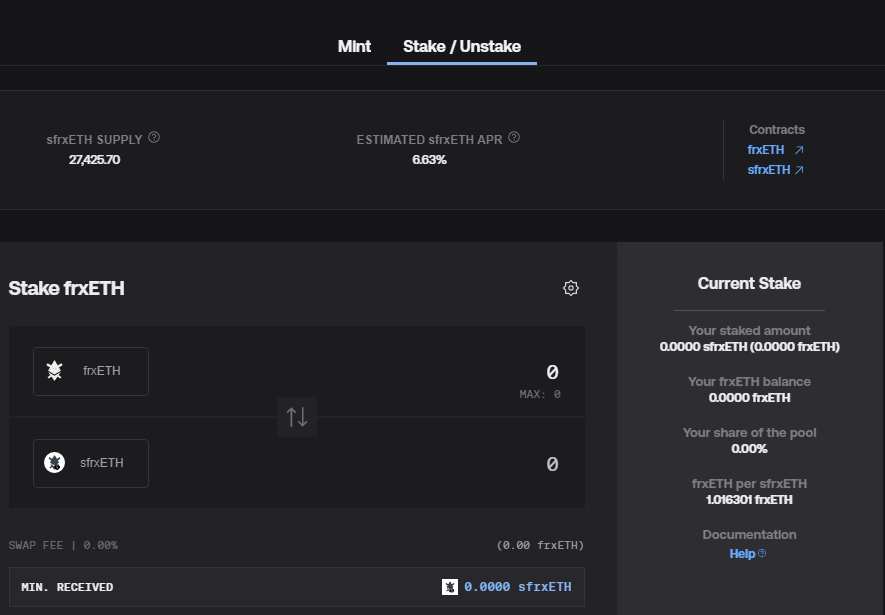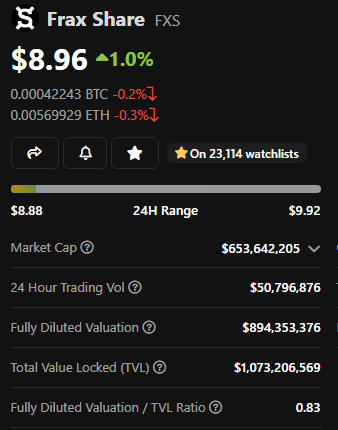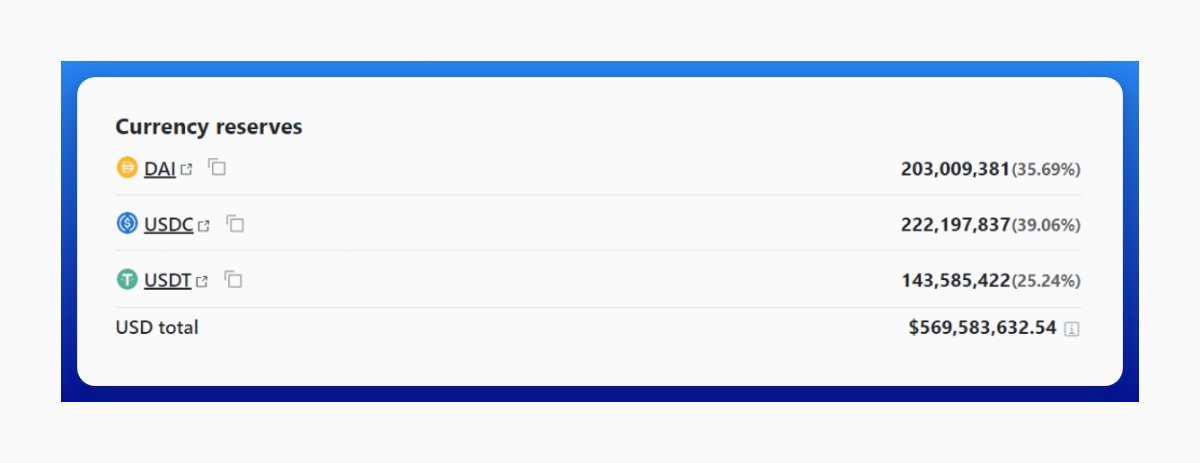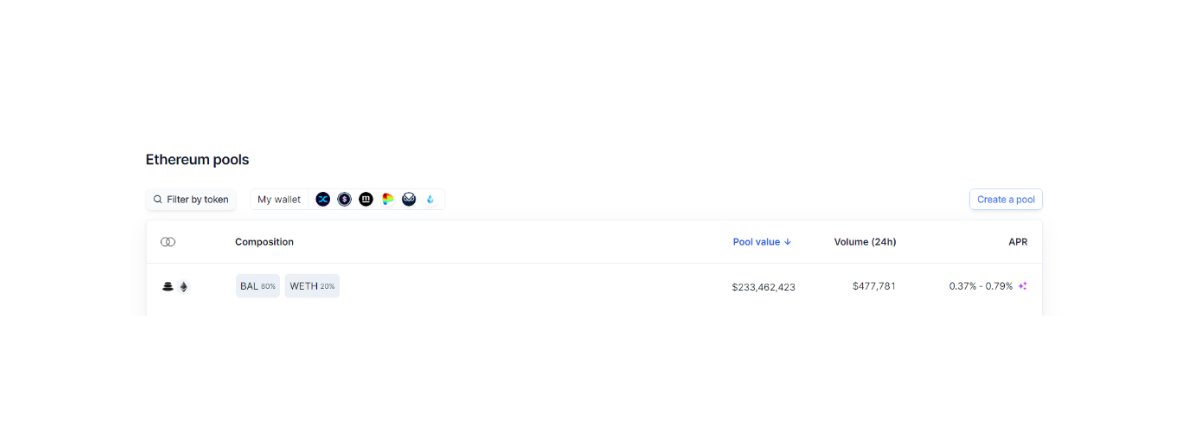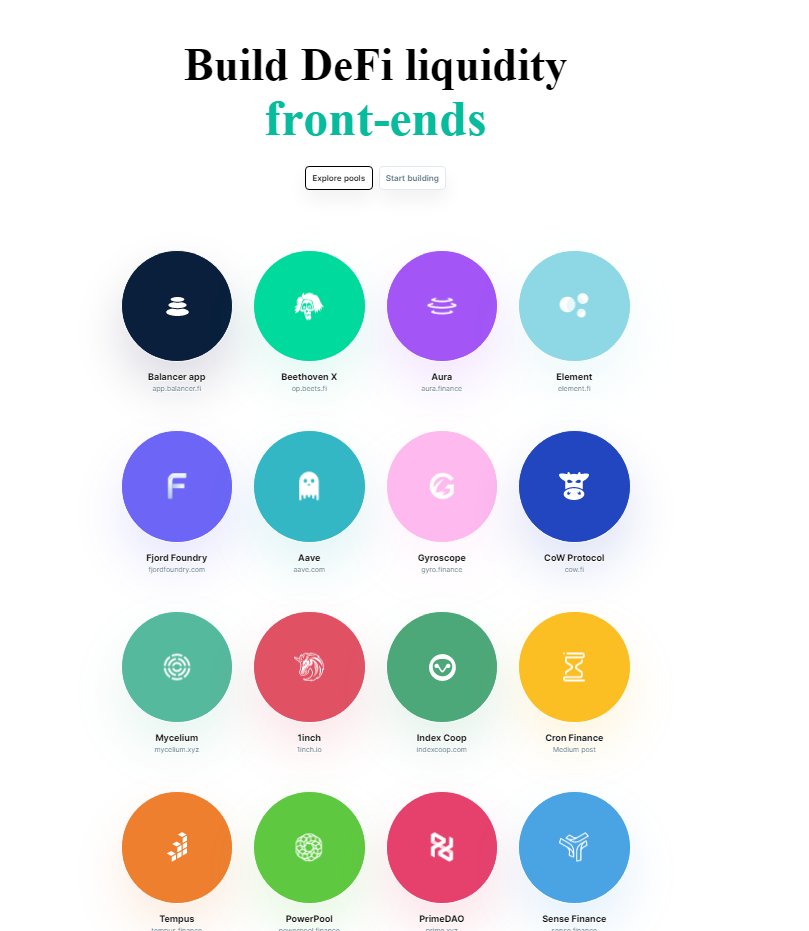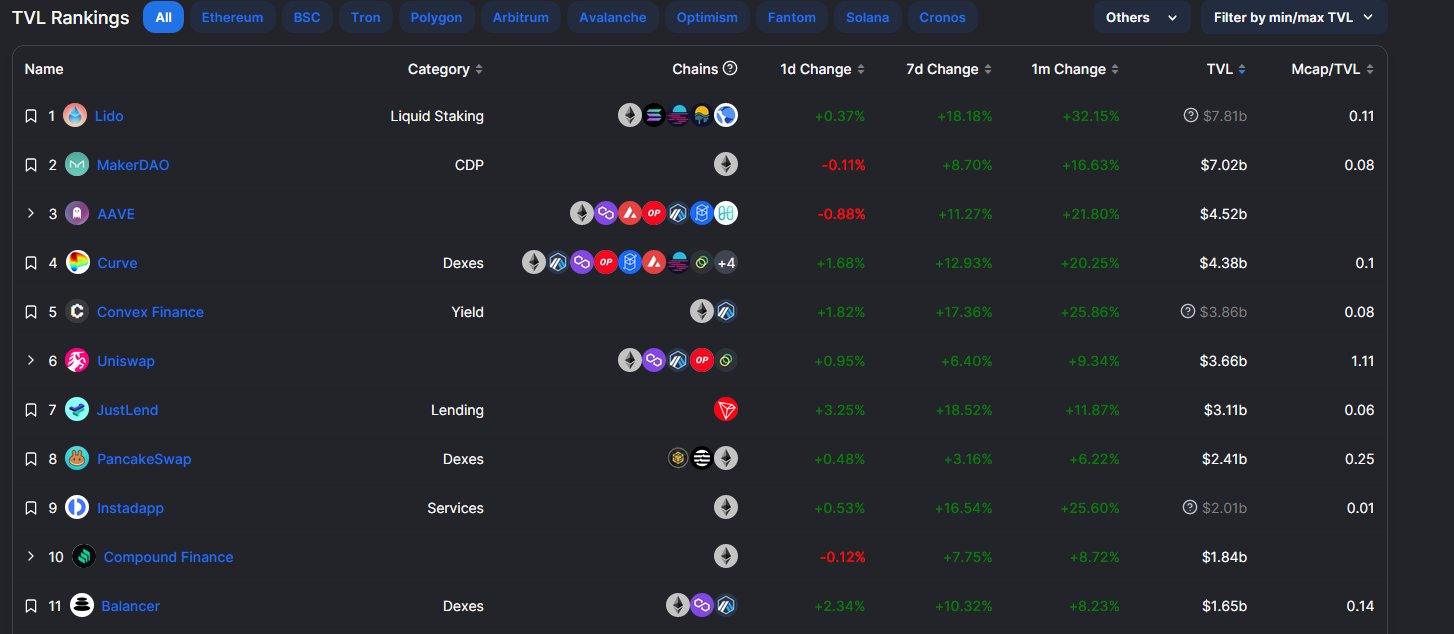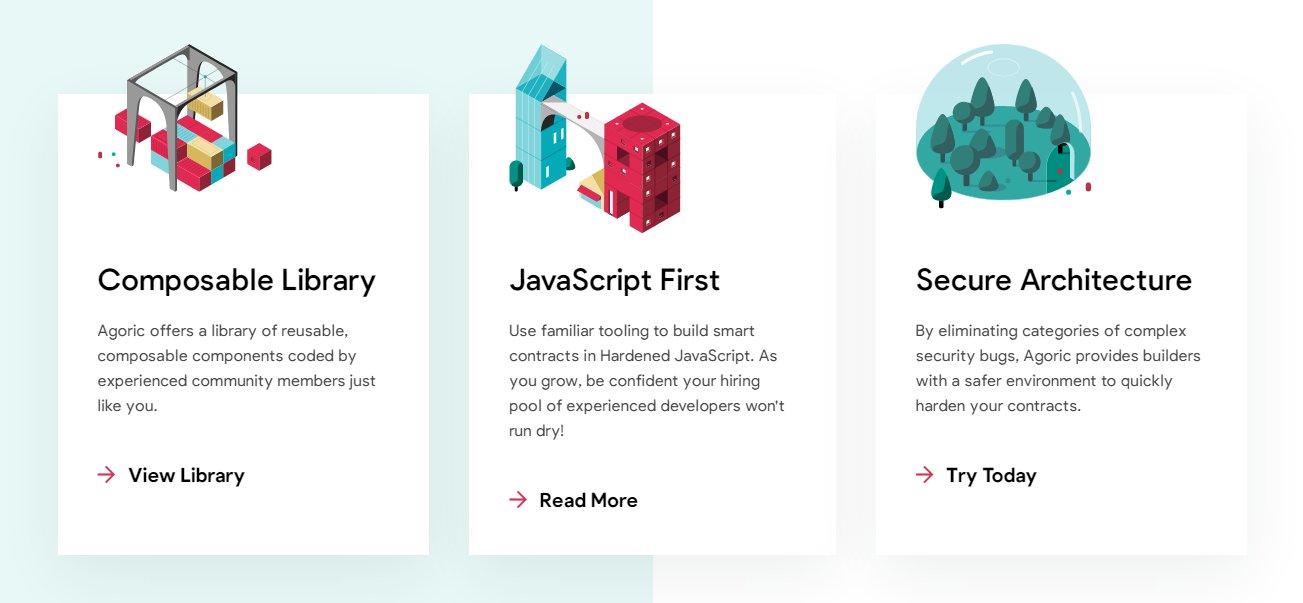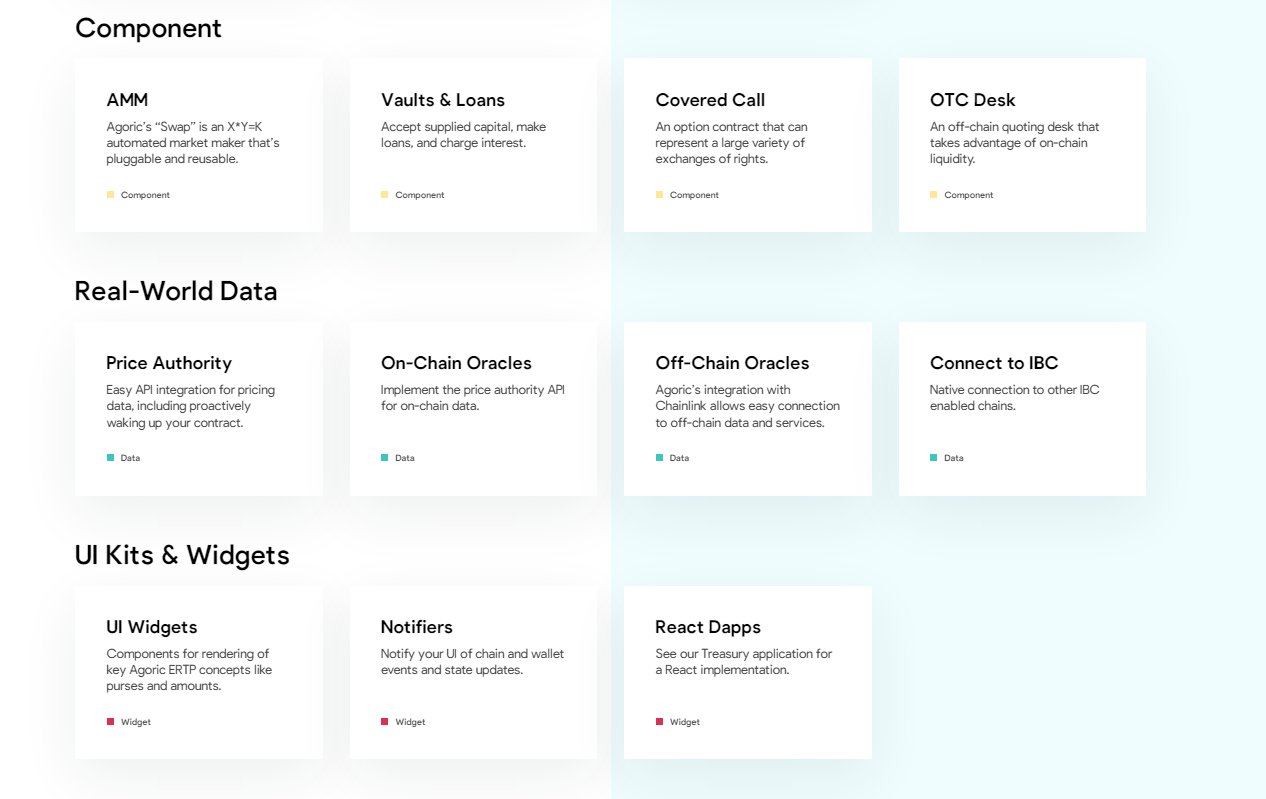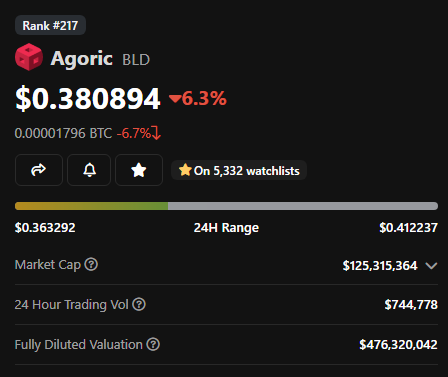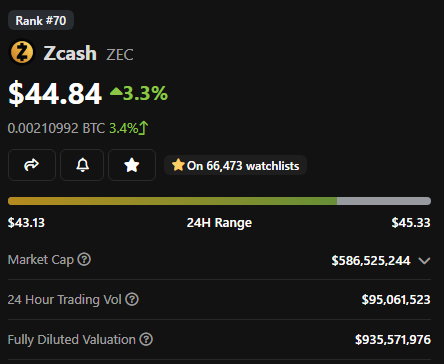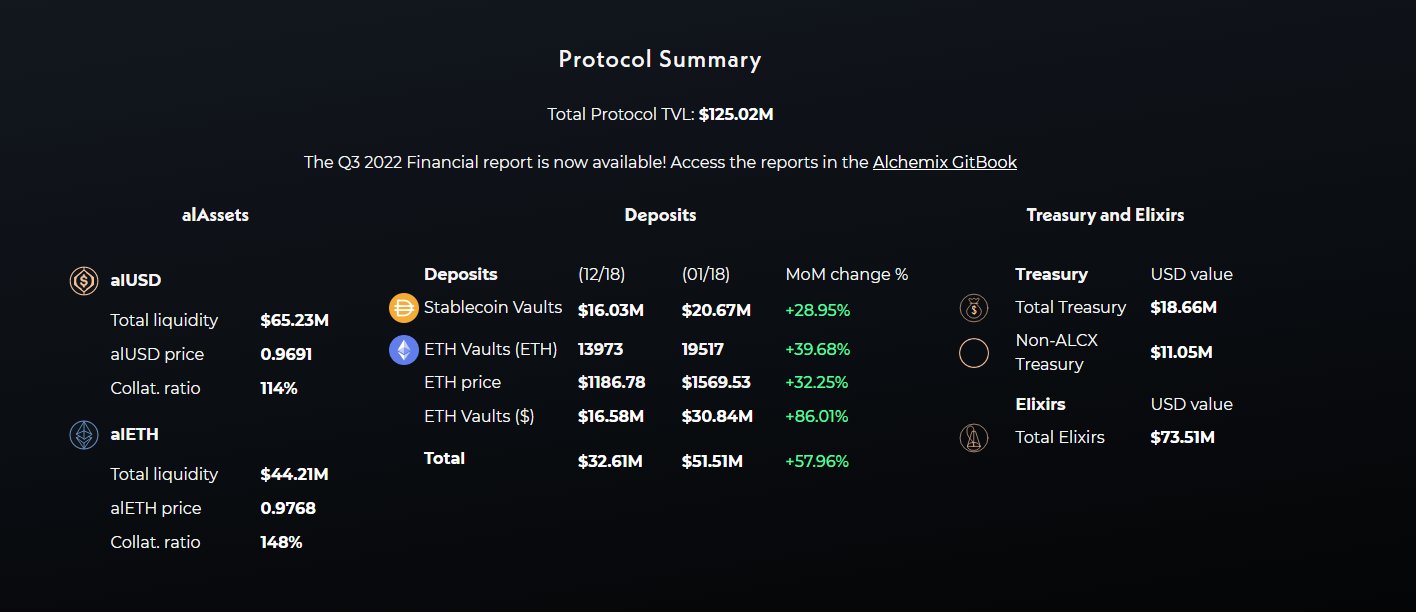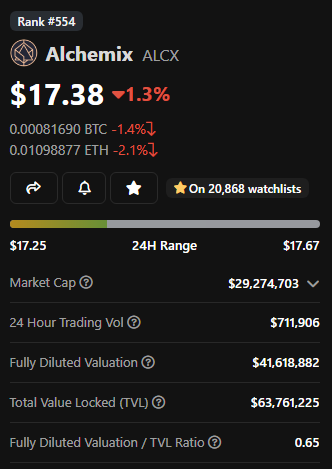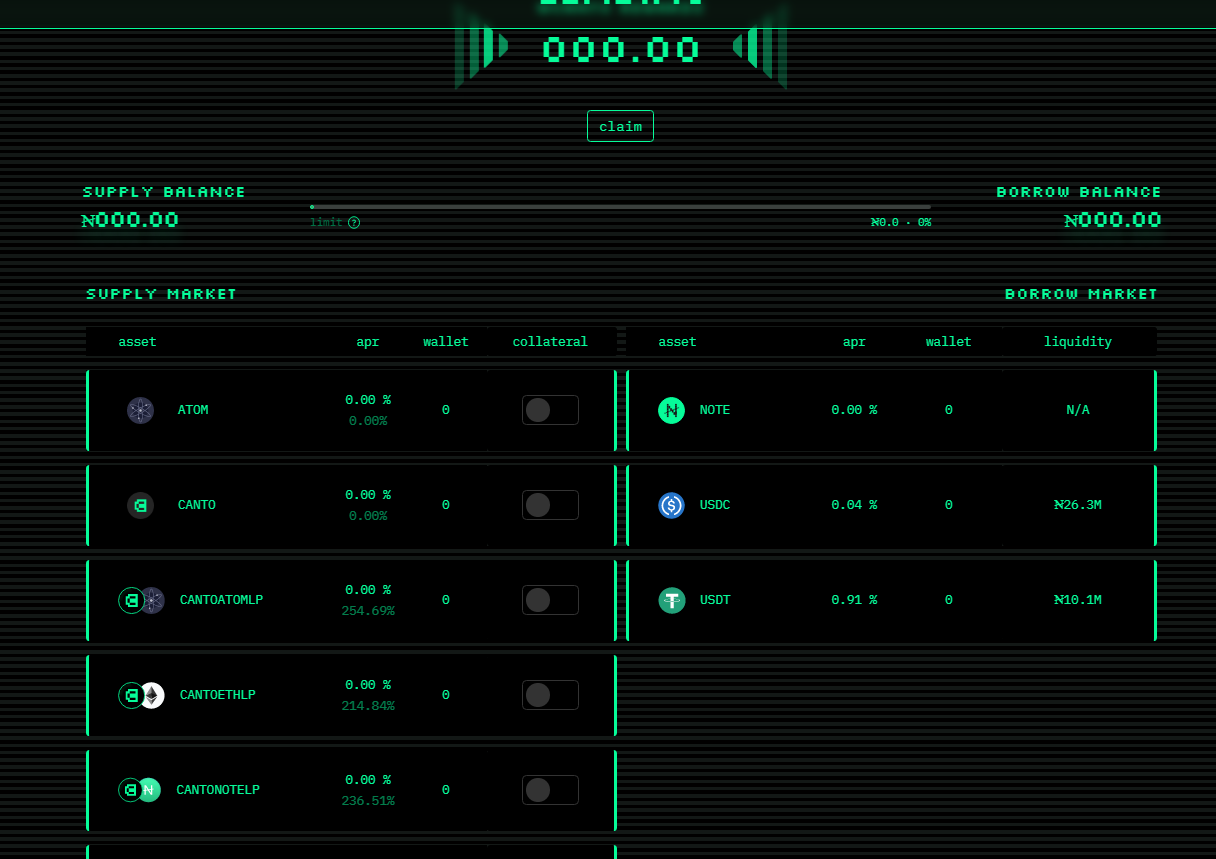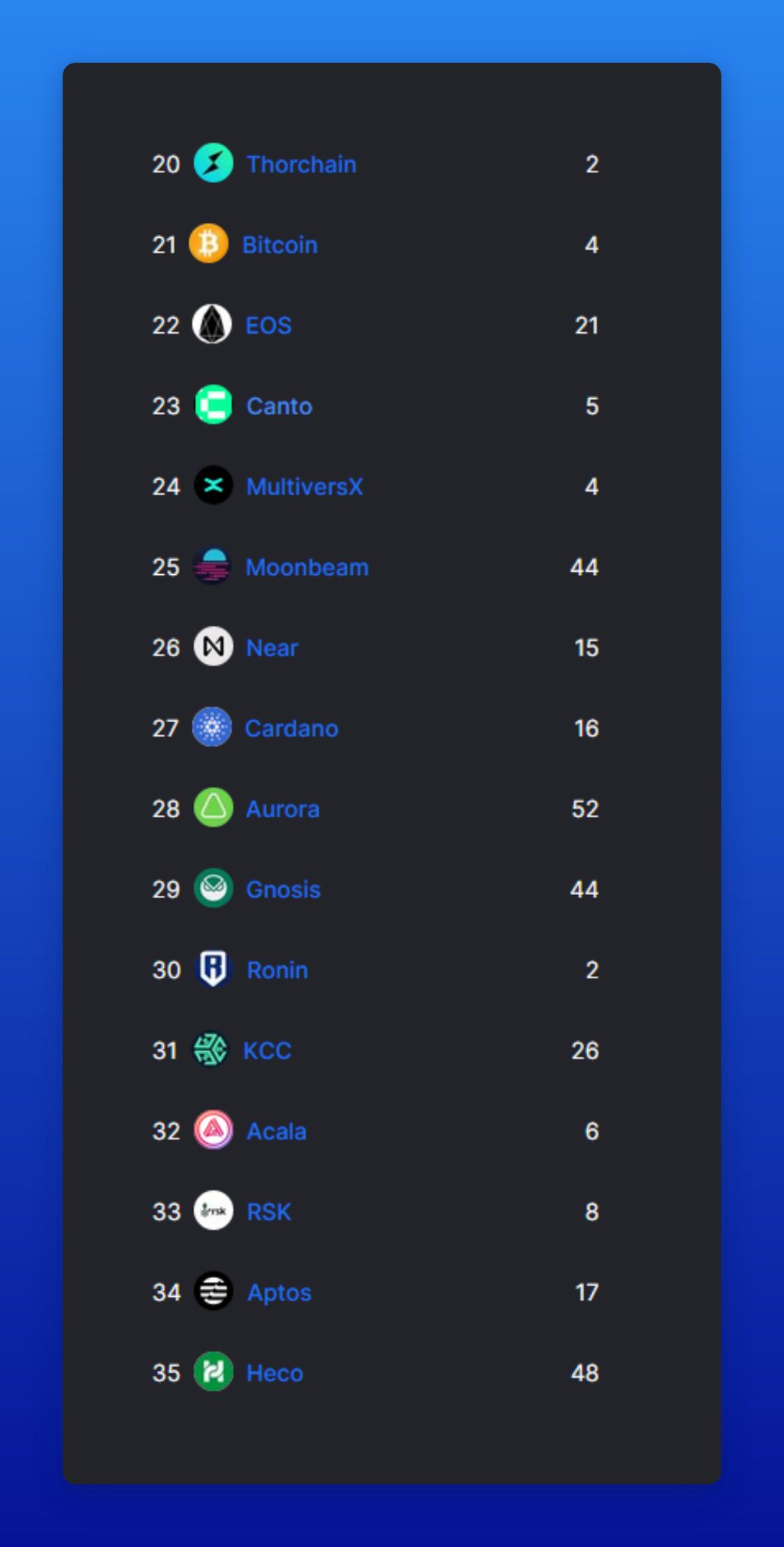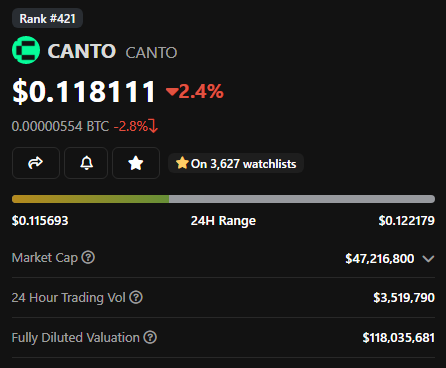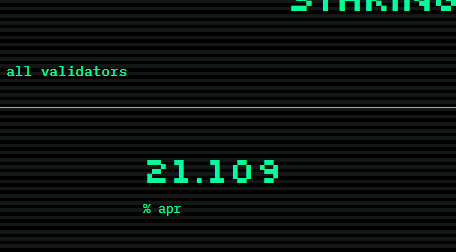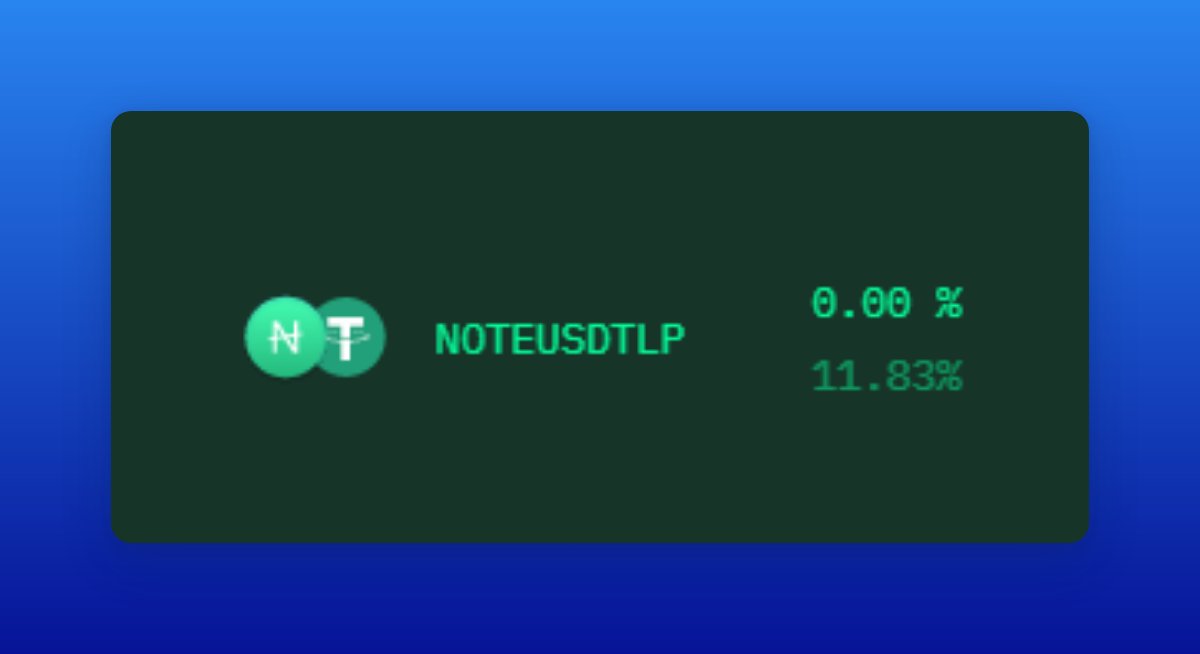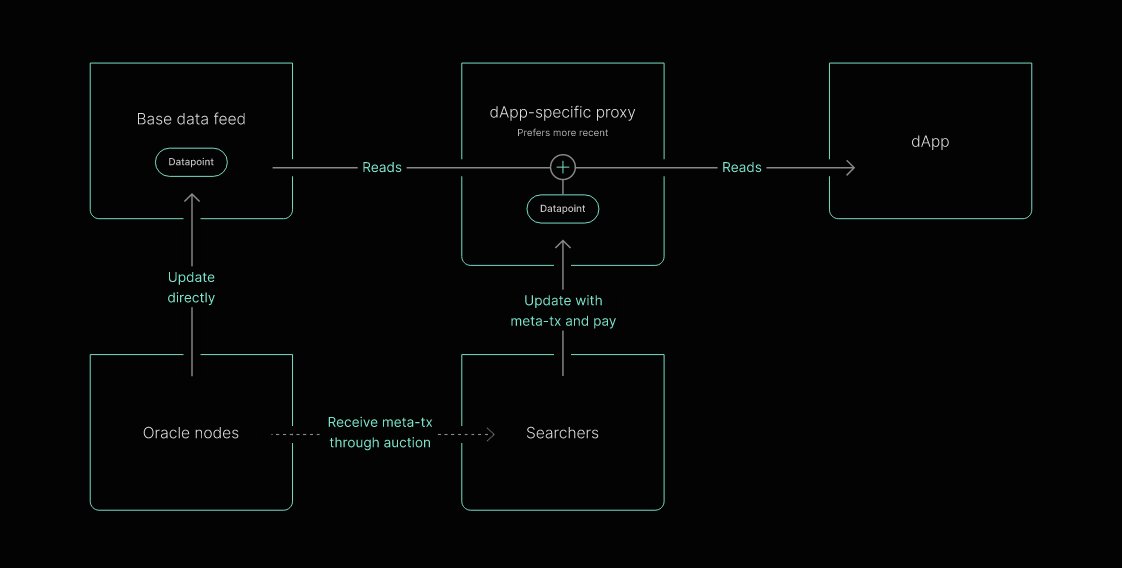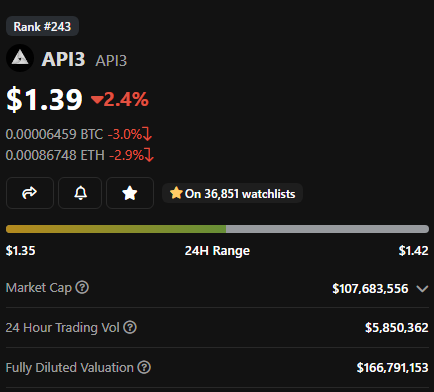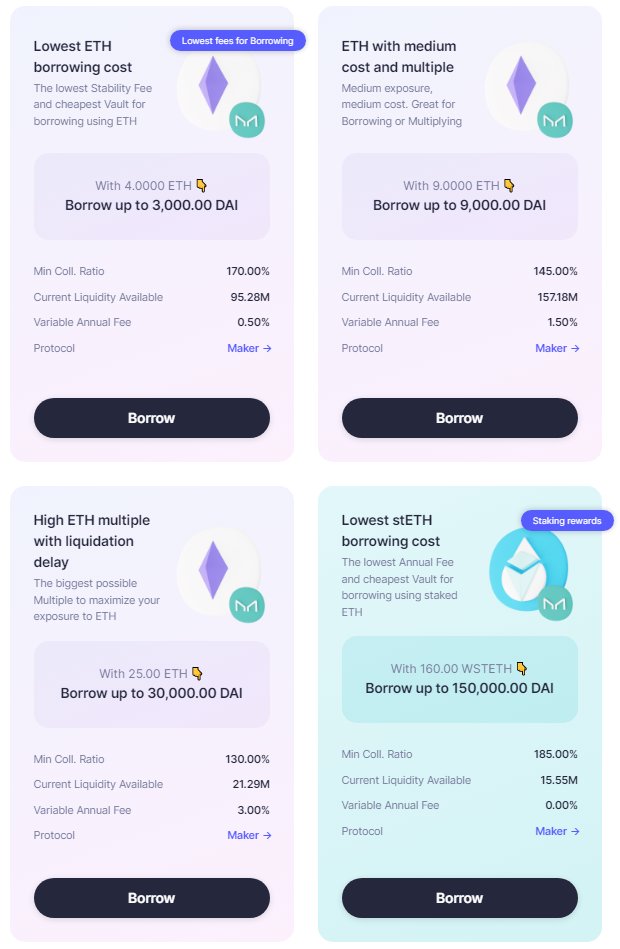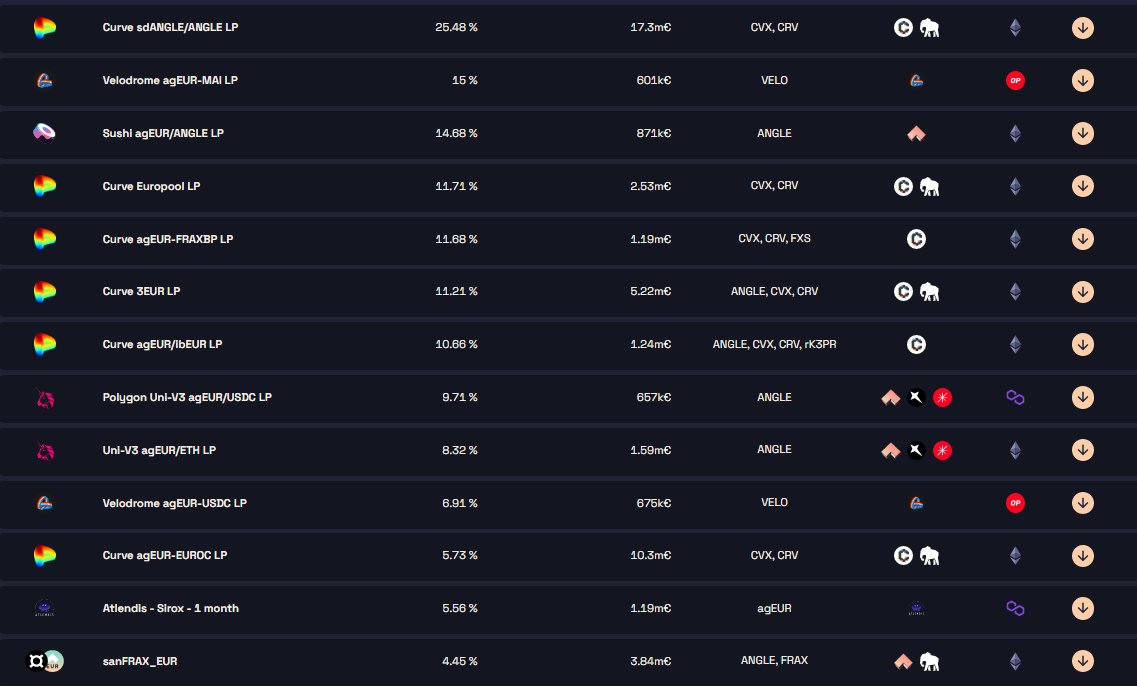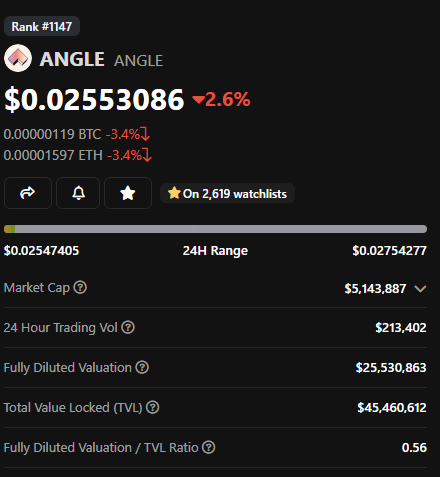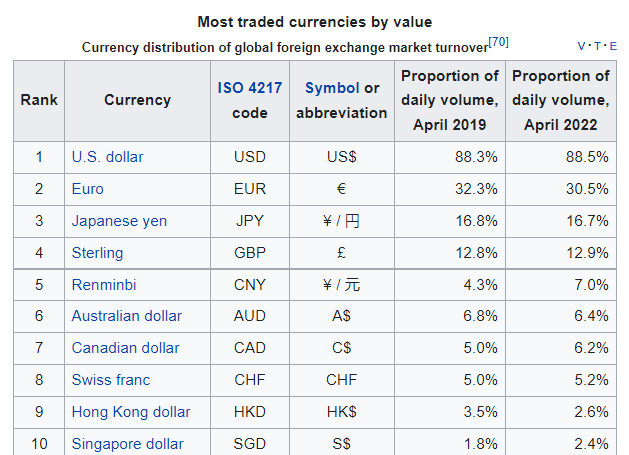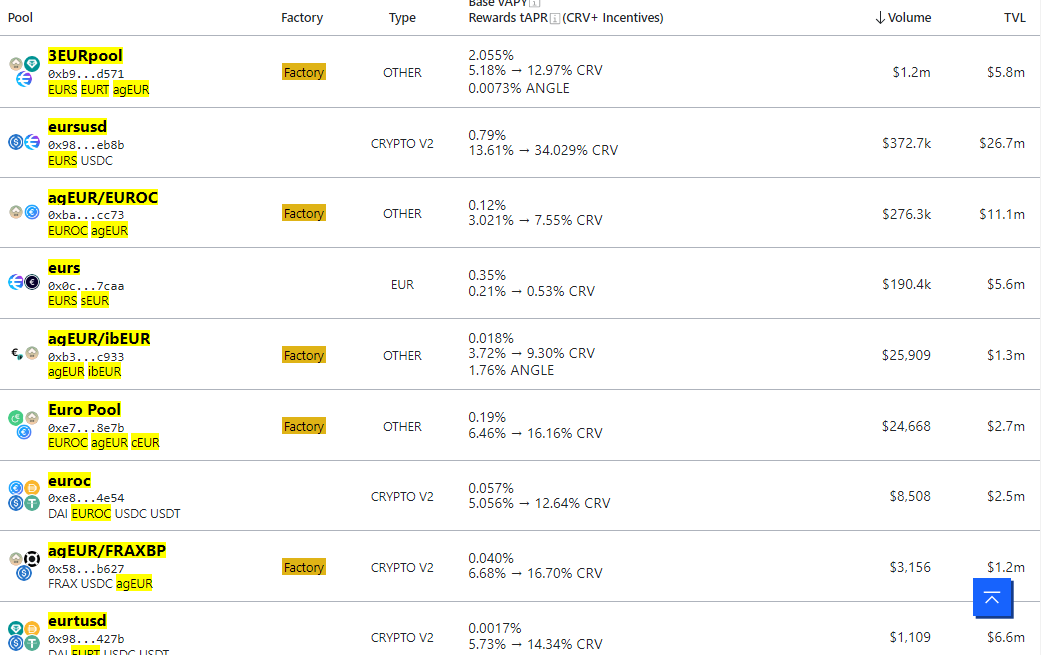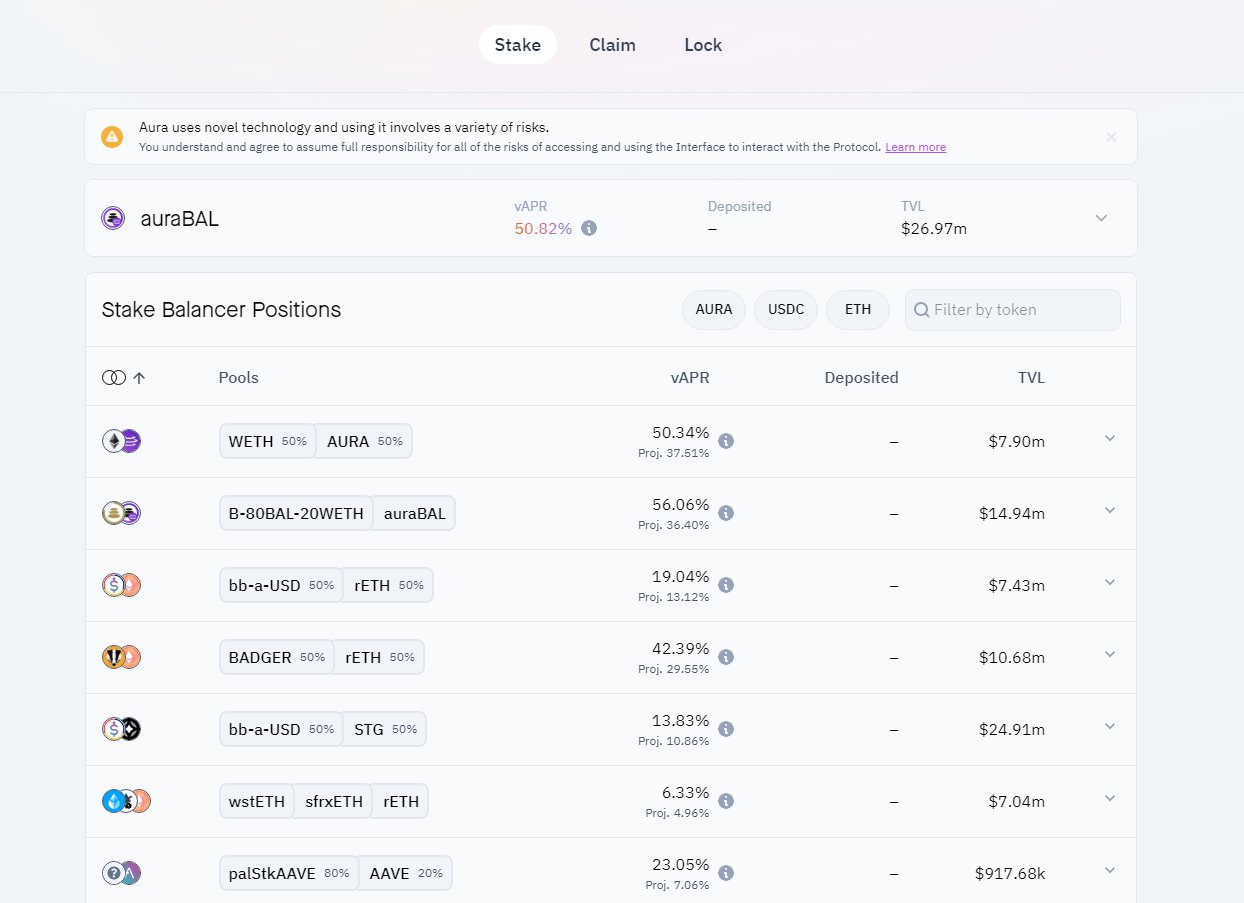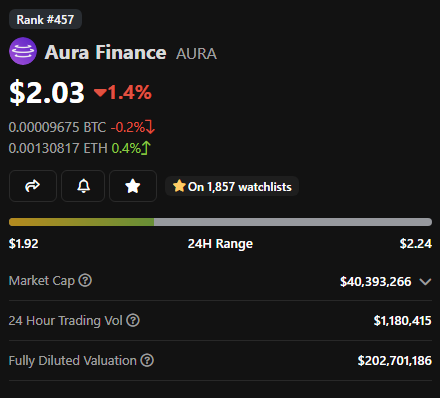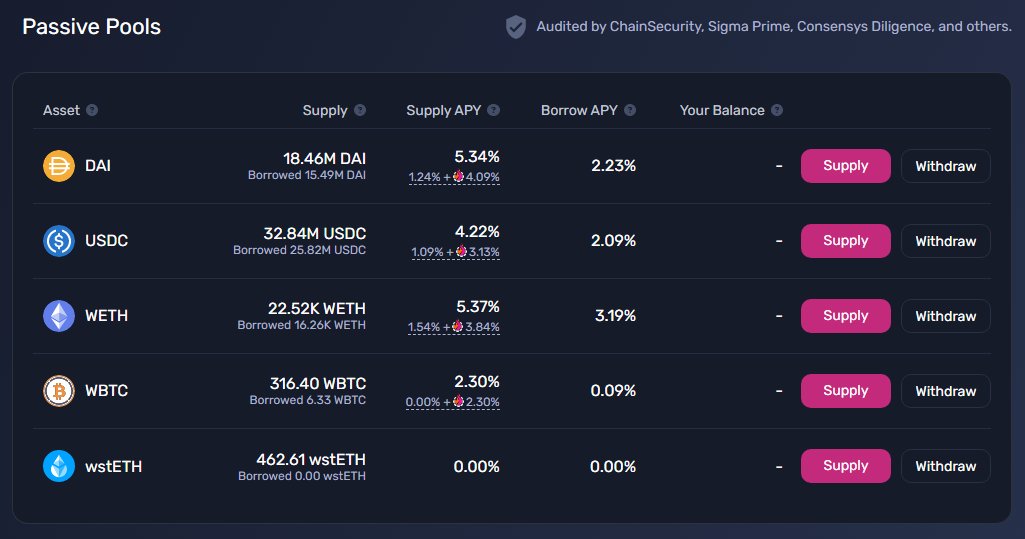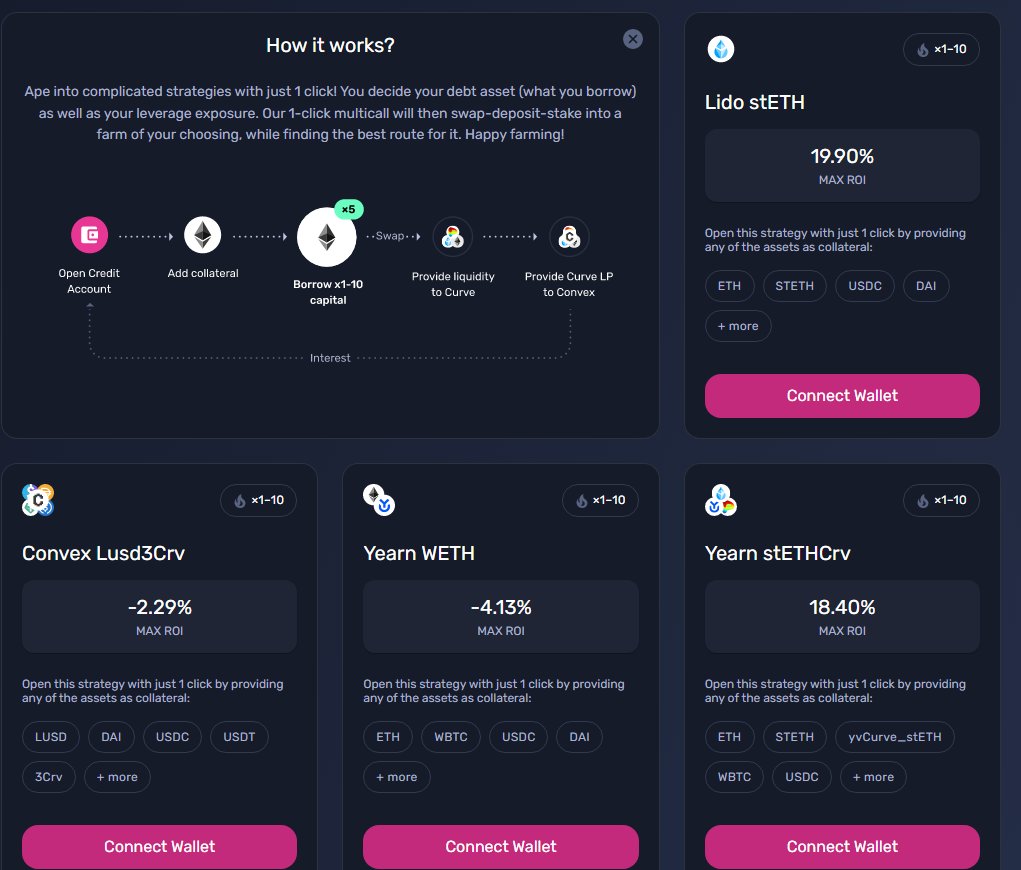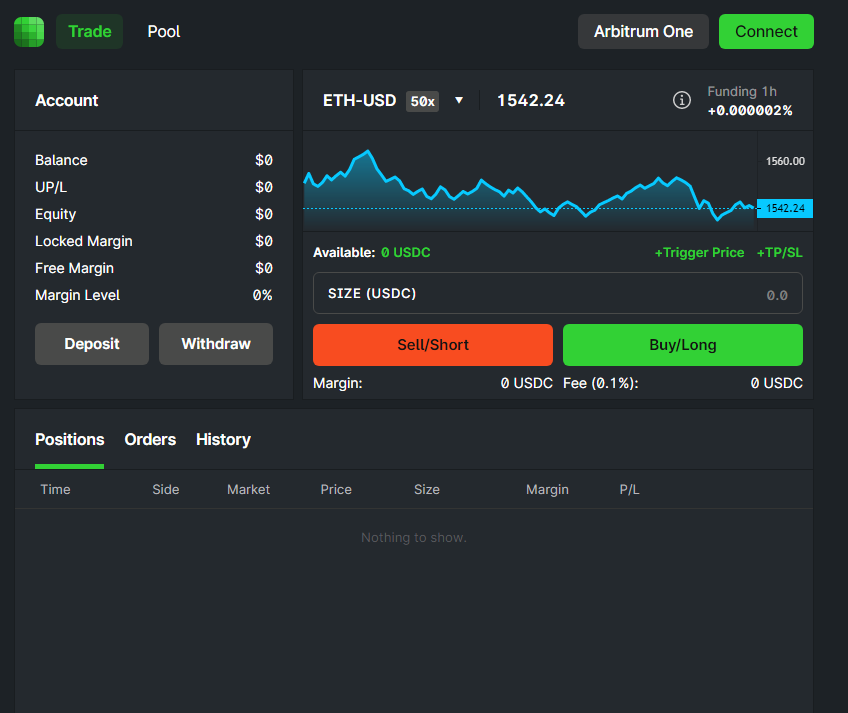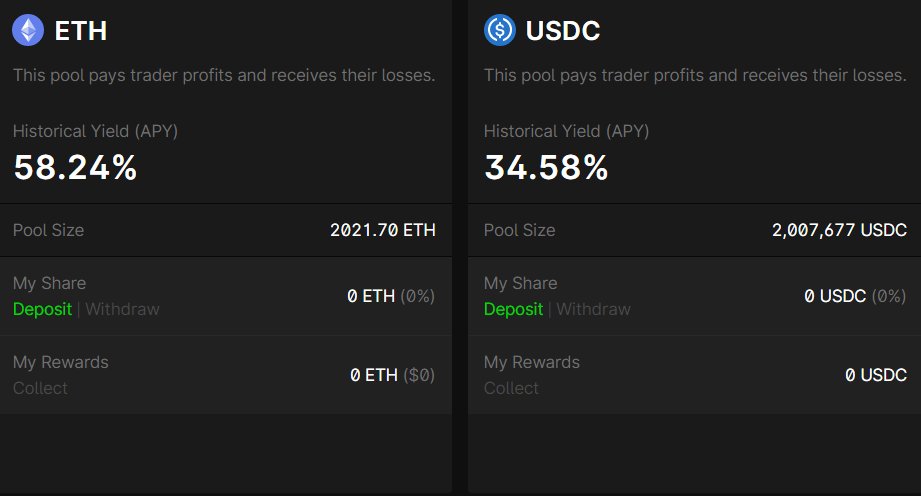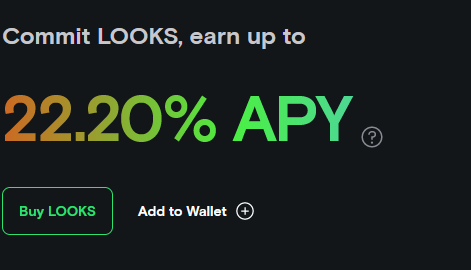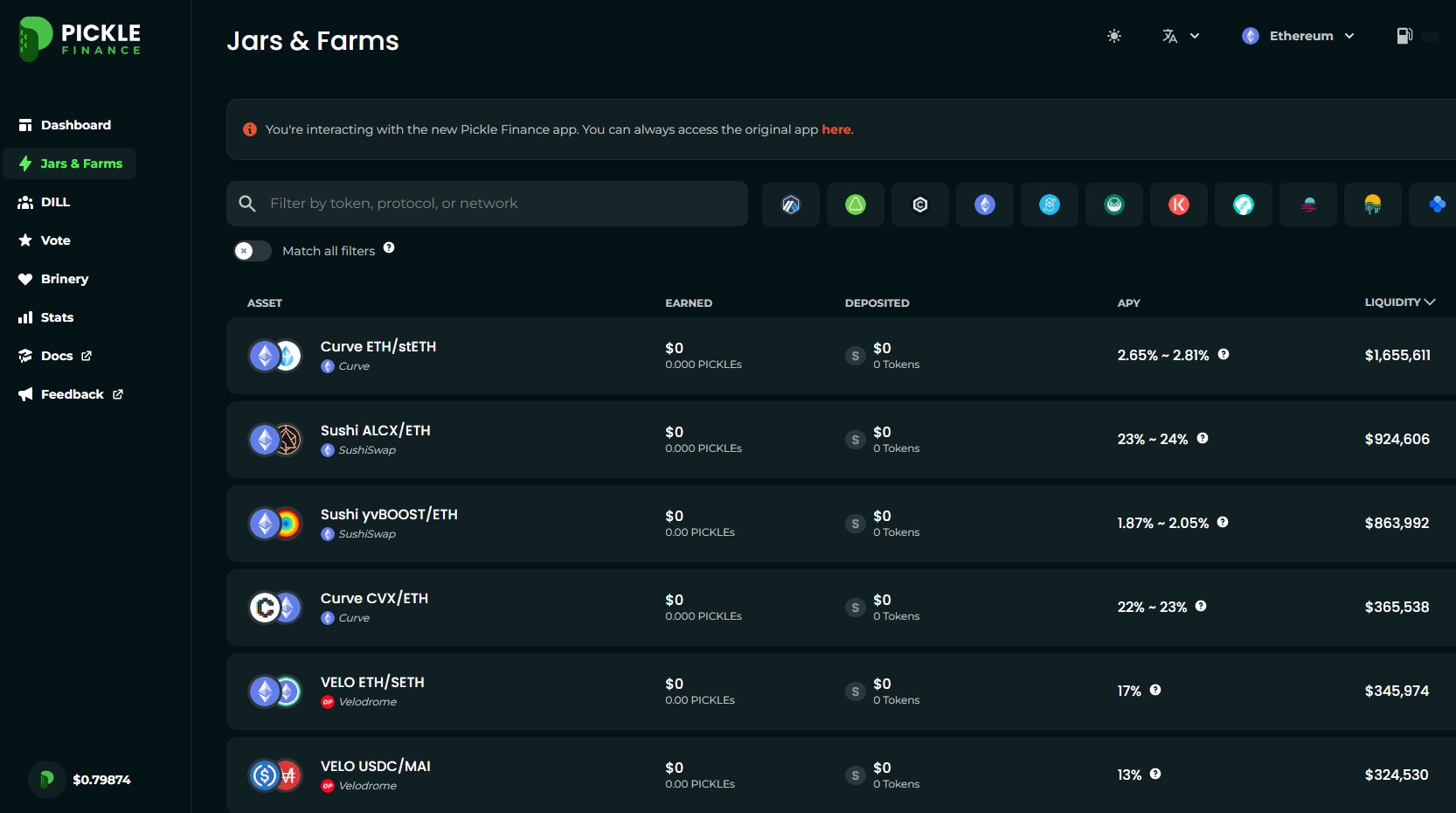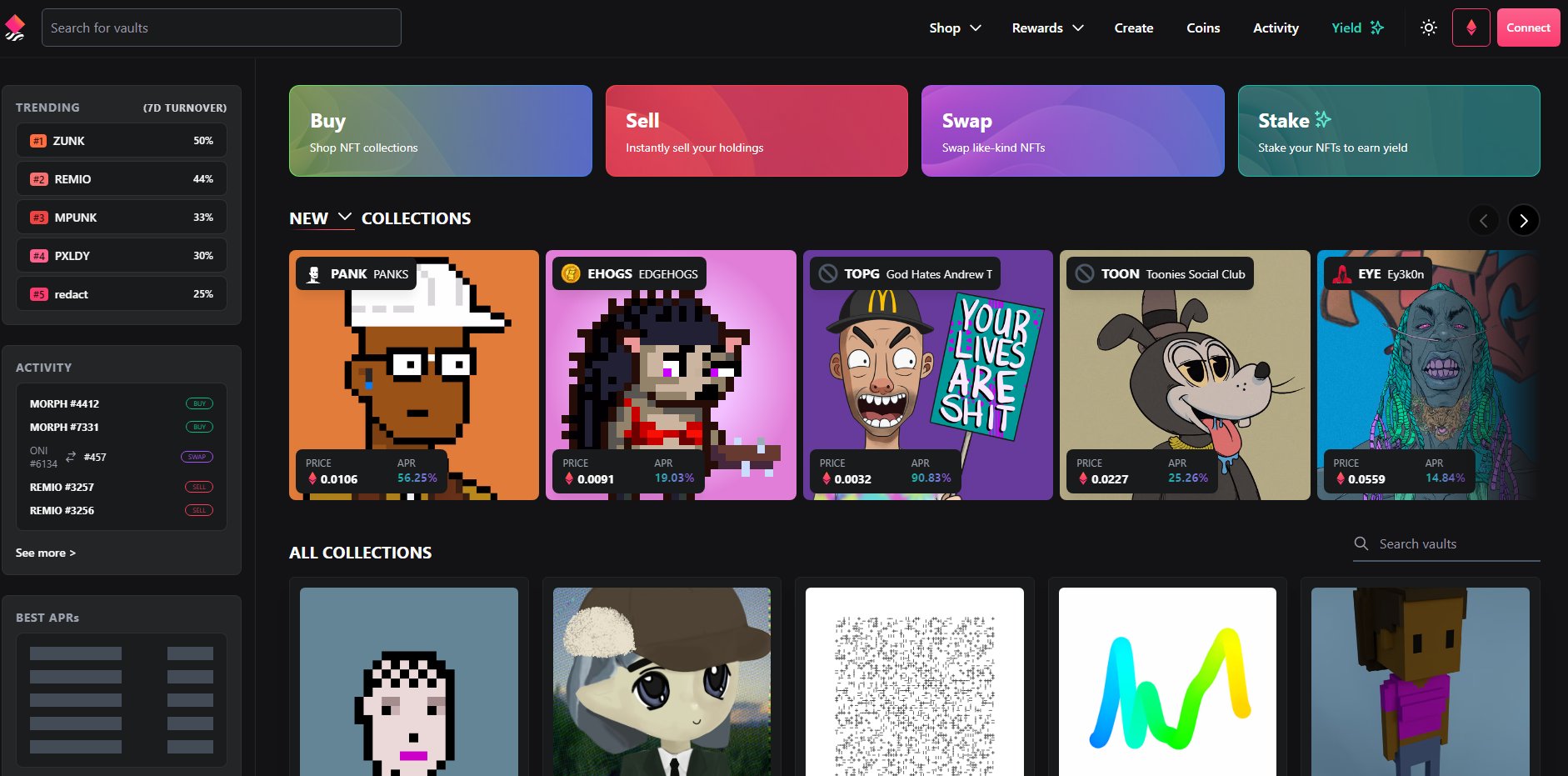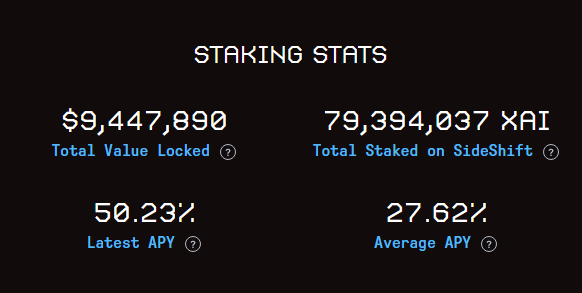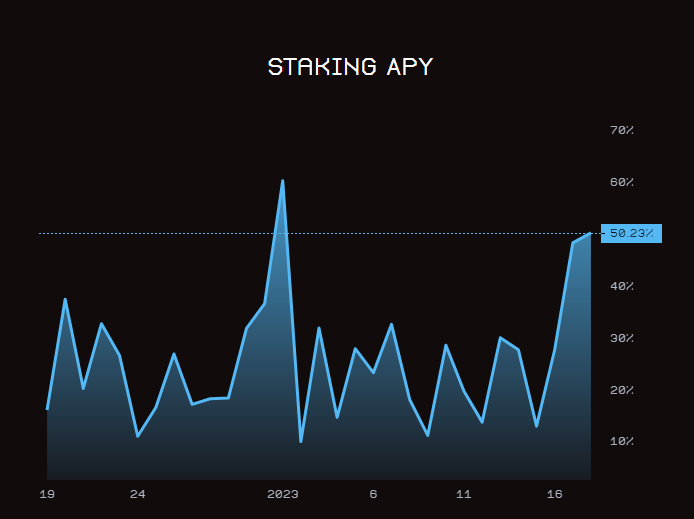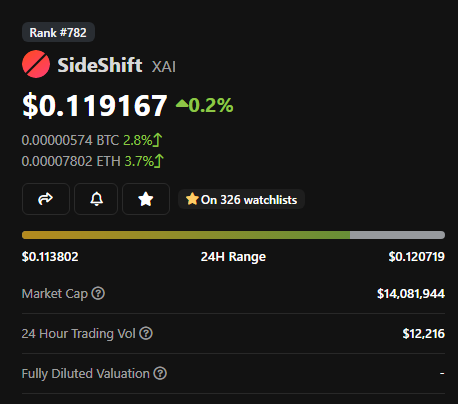Thread by Adam Cochran (adamscochran.eth)
- Tweet
- Jan 18, 2023
Thread
1/268
It's the moment you've waited for, desired and above all else feared.
It's time for the 2023 shopping list!
(Which is also supporting public goods funding! Woo
It's the moment you've waited for, desired and above all else feared.
It's time for the 2023 shopping list!
(Which is also supporting public goods funding! Woo
2/268
If you really hate threads, there is a link to a substack version, where I'll be posting these prior to Twitter from time to time.
adamscochran.substack.com/
If you really hate threads, there is a link to a substack version, where I'll be posting these prior to Twitter from time to time.
adamscochran.substack.com/
3/268
Before we dive into the shopping list, let's do two things.
First, recap what a shopping list is.
Second, review last year's shopping list.
Before we dive into the shopping list, let's do two things.
First, recap what a shopping list is.
Second, review last year's shopping list.
4/268
My shopping list strategy is based on the idea, that during every big spike down in the markets, you don't have time to research individual assets, or else you will miss a buying opportunity.
My shopping list strategy is based on the idea, that during every big spike down in the markets, you don't have time to research individual assets, or else you will miss a buying opportunity.
5/268
Every shopping list starts with establishing a thesis, and a buying plan.
Your thesis is what catalysts you think will drive the markets in the next 3-5 years.
Your buying plan is how much scale to buy of each asset, and what conditions to buy under.
Every shopping list starts with establishing a thesis, and a buying plan.
Your thesis is what catalysts you think will drive the markets in the next 3-5 years.
Your buying plan is how much scale to buy of each asset, and what conditions to buy under.
6/268
Each year I share my shopping list and discuss the catalysts that I think could drive assets on that list.
I don't share my buying plan, because those are always personal based on an individuals circumstances, risk tolerance and timeline.
Each year I share my shopping list and discuss the catalysts that I think could drive assets on that list.
I don't share my buying plan, because those are always personal based on an individuals circumstances, risk tolerance and timeline.
7/268
As a long term investor, I expect the potential of large drawdowns and having to hold for multiple years.
I also expect that some assets will go to absolute zero, and that's ok, if I size my bets accordingly.
As a long term investor, I expect the potential of large drawdowns and having to hold for multiple years.
I also expect that some assets will go to absolute zero, and that's ok, if I size my bets accordingly.
8/268
With a shopping list, you should never over concentrate into a few assets, or buy all at once.
And, your shopping list should be assets *YOU* believe in.
I share mine based on what I think will perform. You should focus on evaluating if you agree with those catalysts.
With a shopping list, you should never over concentrate into a few assets, or buy all at once.
And, your shopping list should be assets *YOU* believe in.
I share mine based on what I think will perform. You should focus on evaluating if you agree with those catalysts.
9/268
Overall, remember, this isn't investment advice.
A purchase that is right for me, may not be one that is right for you.
And any asset purchased could be a good purchase one day, and a bad purchase the next.
Overall, remember, this isn't investment advice.
A purchase that is right for me, may not be one that is right for you.
And any asset purchased could be a good purchase one day, and a bad purchase the next.
10/268
A shopping list also isn't static.
You need to reevaluate it on a monthly basis, think of it in the context of the global macro, shifting industry events and new developments.
In investing, being static is a death wish.
A shopping list also isn't static.
You need to reevaluate it on a monthly basis, think of it in the context of the global macro, shifting industry events and new developments.
In investing, being static is a death wish.
11/268
I always aim for "Strong Opinions; Loosely Held" (SOLH) which means I have conviction & reason behind my choices, but I'm not afraid to adjust when new information comes along.
Last year, this meant shorting as a war broke out and the Fed failed to respond to inflation.
I always aim for "Strong Opinions; Loosely Held" (SOLH) which means I have conviction & reason behind my choices, but I'm not afraid to adjust when new information comes along.
Last year, this meant shorting as a war broke out and the Fed failed to respond to inflation.
12/268
Hedging downside with contracts allowed me to continue spot buying assets that I felt were important for the future.
With all that in mind, let's talk about last year:
Hedging downside with contracts allowed me to continue spot buying assets that I felt were important for the future.
With all that in mind, let's talk about last year:
13/268
Here's the link to last years shopping list:
Here's the link to last years shopping list:
14/268
2022 was a tough year. You've probably seen the "Shitcoin Minimalist's" tweet outlining that if you bought all the assets one the day it was posted, the average return was -83.9% - woo!
2022 was a tough year. You've probably seen the "Shitcoin Minimalist's" tweet outlining that if you bought all the assets one the day it was posted, the average return was -83.9% - woo!
15/268
But, if we look at the top 130 assets by marketcap after this rally, the average one year draw down was -72% and the average drawdown of my list? -71.16%
And these tokens had an average 30.86% rebound from the lows, beating out BTC and ETH on the recovery.
But, if we look at the top 130 assets by marketcap after this rally, the average one year draw down was -72% and the average drawdown of my list? -71.16%
And these tokens had an average 30.86% rebound from the lows, beating out BTC and ETH on the recovery.
16/268
Obviously it was a rough year, lets not pretend it wasn't; but the asset list did outperform the average index, and in many cases their peers.
It didn't win out against holding BTC or ETH, which you wouldn't expect, but those won't deliver huge multipliers either.
Obviously it was a rough year, lets not pretend it wasn't; but the asset list did outperform the average index, and in many cases their peers.
It didn't win out against holding BTC or ETH, which you wouldn't expect, but those won't deliver huge multipliers either.
17/268
Now lets dive into this years shopping list.
A few things to note:
1. Disclaimer: I own most of these assets, I'm absolutely talking my book and if I didn't believe in the asset enough to buy it, it wouldn't be on my list.
Now lets dive into this years shopping list.
A few things to note:
1. Disclaimer: I own most of these assets, I'm absolutely talking my book and if I didn't believe in the asset enough to buy it, it wouldn't be on my list.
18/268
2. If people stupidly ape into I certainly may rebalance some positions, but I think these are long term winners. But, if you blow it out 100x in a day, look, I'mma dump on you and rebuy afterwards and so will other holders.
3. Custom AI art for each asset cause fun.
2. If people stupidly ape into I certainly may rebalance some positions, but I think these are long term winners. But, if you blow it out 100x in a day, look, I'mma dump on you and rebuy afterwards and so will other holders.
3. Custom AI art for each asset cause fun.
19/268
4. This year I've also taken sponsorship and affiliate links which the revenue from will be going to Gitcoin grants. This is only for outbound links. Projects could not pay to get on the list.
4. This year I've also taken sponsorship and affiliate links which the revenue from will be going to Gitcoin grants. This is only for outbound links. Projects could not pay to get on the list.
20/268
This years thesis summary:
-Real external revenue continues to be the most important factor.
-But, assets are so depressed that there are some 'growth' style tokens that have a good r:r
-Focus on real revenue catalysts, novel infrastructure and UX plays.
This years thesis summary:
-Real external revenue continues to be the most important factor.
-But, assets are so depressed that there are some 'growth' style tokens that have a good r:r
-Focus on real revenue catalysts, novel infrastructure and UX plays.
21/268
Real revenue refers to projects that users external to the project use and generate revenue for, especially in cases where it isn't supported by on going emission incentives which ultimately cost users.
Real revenue refers to projects that users external to the project use and generate revenue for, especially in cases where it isn't supported by on going emission incentives which ultimately cost users.
22/268
The other important highlight is UX plays.
This isn't just design, this is anything that makes it simple for users to use blockchain technology.
Just like a web browser or a search engine makes the internet easy to use, we need tools that make crypto easy to use.
The other important highlight is UX plays.
This isn't just design, this is anything that makes it simple for users to use blockchain technology.
Just like a web browser or a search engine makes the internet easy to use, we need tools that make crypto easy to use.
23/268
These can be bridges, multchain apps, automation tools, smart wallets, etc.
Anything that makes the complicated system of fractured liquidity easier to use or to build on.
With that in mind, lets dive in:
These can be bridges, multchain apps, automation tools, smart wallets, etc.
Anything that makes the complicated system of fractured liquidity easier to use or to build on.
With that in mind, lets dive in:
24/268
S-Class:
#1 Ethereum:
Ethereum really needs no justification for being on the top list.
It's got the most users, its deflationary when in use, and it has a dozen upcoming scaling solutions.
Buy on Sideshift: sideshift.ai/a/shifts
S-Class:
#1 Ethereum:
Ethereum really needs no justification for being on the top list.
It's got the most users, its deflationary when in use, and it has a dozen upcoming scaling solutions.
Buy on Sideshift: sideshift.ai/a/shifts
25/268
I think staking ETH long term is like buying up internet infrastructure after the dot-com crash.
Everything across this industry is in pain and likely oversold long term, but that doesn't mean it isn't useful.
I think staking ETH long term is like buying up internet infrastructure after the dot-com crash.
Everything across this industry is in pain and likely oversold long term, but that doesn't mean it isn't useful.
26/268
My personal take is that one day the Ethereum blockchain will be a ubiquitous data layer, and staking Ethereum will be a rare opportunity for participants to create multi-generational wealth.
Modern day Vanderbilts are being born right now.
My personal take is that one day the Ethereum blockchain will be a ubiquitous data layer, and staking Ethereum will be a rare opportunity for participants to create multi-generational wealth.
Modern day Vanderbilts are being born right now.
27/268
#2
@RDNTCapital - $RDNT
Radiant Capital is one of the new projects from this cycle that I'm most excited about.
It takes the existing money market model, build it cross chain natively, and make it entirely community operated.
Buy on Sushi: app.sushi.com/swap?inputCurrency=0x0c4681e6c0235179ec3d4f4fc4df3d14fdd96017&outputCurrency=0x82af4944...
#2
@RDNTCapital - $RDNT
Radiant Capital is one of the new projects from this cycle that I'm most excited about.
It takes the existing money market model, build it cross chain natively, and make it entirely community operated.
Buy on Sushi: app.sushi.com/swap?inputCurrency=0x0c4681e6c0235179ec3d4f4fc4df3d14fdd96017&outputCurrency=0x82af4944...
28/268
Having launched first on Arbitrum, Radiant Capital is built on top of LayerZero (a project that only isn't on this list because it's had such a successful run up recently) which will allow it to have native crosschain markets
Having launched first on Arbitrum, Radiant Capital is built on top of LayerZero (a project that only isn't on this list because it's had such a successful run up recently) which will allow it to have native crosschain markets
29/268
Users will be able to deposit collateral on one network, and borrow on another seamlessly.
Stake your native tokens on Arbitrum, and borrow on Polygon to ape into the next farm.
Use your OP token as collateral to borrow USDC for mainnet farming.
Users will be able to deposit collateral on one network, and borrow on another seamlessly.
Stake your native tokens on Arbitrum, and borrow on Polygon to ape into the next farm.
Use your OP token as collateral to borrow USDC for mainnet farming.
30/268
Users will be able to borrow, settle and pay fees cross market.
The team is entirely bootstrapped with no VC raise or seed round, and unlike Aave or Compound which take the fees for their developers, Radiant's protocol rewards it all to stakers.
Users will be able to borrow, settle and pay fees cross market.
The team is entirely bootstrapped with no VC raise or seed round, and unlike Aave or Compound which take the fees for their developers, Radiant's protocol rewards it all to stakers.
31/268
That means stakers are getting good APYs (right now 39.75%) but instead of that all coming from a diluting token, it's coming from real use cases, and paid out in real valuable assets, the bulk of it coming in the form of USDC.
That means stakers are getting good APYs (right now 39.75%) but instead of that all coming from a diluting token, it's coming from real use cases, and paid out in real valuable assets, the bulk of it coming in the form of USDC.
32/268
In terms of valuation, RDNT is currently only at a $2M valuation and a $70M FDV, although with the bulk of that FDV being paid over time to stakers, the dilution really isn't equivalent.
In terms of valuation, RDNT is currently only at a $2M valuation and a $70M FDV, although with the bulk of that FDV being paid over time to stakers, the dilution really isn't equivalent.
33/268
Considering Compound has a marketcap of $365M (FDV $529M), and Aave is $1.2B (FDV $1.3B) there is a lot of room for growth here.
But, what's more, even though Aave and Compound are multichain, their liquidity is fractured.
Considering Compound has a marketcap of $365M (FDV $529M), and Aave is $1.2B (FDV $1.3B) there is a lot of room for growth here.
But, what's more, even though Aave and Compound are multichain, their liquidity is fractured.
34/268
And while Aave hopes to launch "Portals" with its V3, they aren't live yet, and will be limited by Aave's structure.
Whereas, Radiant is building from the ground up with crosschain design in mind.
And while Aave hopes to launch "Portals" with its V3, they aren't live yet, and will be limited by Aave's structure.
Whereas, Radiant is building from the ground up with crosschain design in mind.
35/268
I think there is easily a $5B+ opportunity for whichever team can capture a strong marketshare of crosschain lending, and Radiant is off to a strong start.
This market has been hard to break into, so the risk:reward upside is large if they can pull it off.
I think there is easily a $5B+ opportunity for whichever team can capture a strong marketshare of crosschain lending, and Radiant is off to a strong start.
This market has been hard to break into, so the risk:reward upside is large if they can pull it off.
36/268
# 3 - @iearnfinance $YFI:
Yearn is the irrefutable leader of Yield automation and vaults, and more importantly has gone through a major transformation in terms of its competitive offering.
Buy on Sideshift: sideshift.ai/a/shifts
# 3 - @iearnfinance $YFI:
Yearn is the irrefutable leader of Yield automation and vaults, and more importantly has gone through a major transformation in terms of its competitive offering.
Buy on Sideshift: sideshift.ai/a/shifts
37/268
Yearn has recently entirely rebuilt their offering, including:
-A new site
-Supporting new chains
-Making much cheaper fees
-Reworking their CRV integration
-Remodeling the YFI token
Yearn has recently entirely rebuilt their offering, including:
-A new site
-Supporting new chains
-Making much cheaper fees
-Reworking their CRV integration
-Remodeling the YFI token
38/268
One thing you have to understand is that Yearn owns a lot of CRV, in fact the own 44M locked CRV, making them one of the largest Curve holders in the ecosystem.
That incredibly amount of voting power is used to help them get higher returns on their strategy vaults.
One thing you have to understand is that Yearn owns a lot of CRV, in fact the own 44M locked CRV, making them one of the largest Curve holders in the ecosystem.
That incredibly amount of voting power is used to help them get higher returns on their strategy vaults.
39/268
Under their previous model, the way they acquired and rewarded their CRV lockup was inefficient, and so they converted their old 'yBoost' to a new model of yCRV which currently pays out up to 45% APY when staked.
Under their previous model, the way they acquired and rewarded their CRV lockup was inefficient, and so they converted their old 'yBoost' to a new model of yCRV which currently pays out up to 45% APY when staked.
40/268
But, what's even more interesting is that your locked veYFI will be able to vote on gauges to decide which vaults get that voting power allocated to them AND which vaults get $YFI rewards direct to them.
But, what's even more interesting is that your locked veYFI will be able to vote on gauges to decide which vaults get that voting power allocated to them AND which vaults get $YFI rewards direct to them.
41/268
You can kind of imagine this like Convex's Votium, but integrated directly into the system, and instead of earning yield from one place, it earns from three:
-The Yearn Vault
-YFI emissions that Yearn bought back
-CRV rewards
You can kind of imagine this like Convex's Votium, but integrated directly into the system, and instead of earning yield from one place, it earns from three:
-The Yearn Vault
-YFI emissions that Yearn bought back
-CRV rewards
42/268
The bribing has just started and it seems people are unaware of it entirely, because the participation has been low, which means it would take very few votes to increase your vault rewards.
The bribing has just started and it seems people are unaware of it entirely, because the participation has been low, which means it would take very few votes to increase your vault rewards.
43/268
Yearn also has started to create automated factories that allow any project to deploy automated yield vaults for their pools, and set bribes toward that pool.
As the number of templates expand, Yearn will be able to automate a large number of vaults for any project.
Yearn also has started to create automated factories that allow any project to deploy automated yield vaults for their pools, and set bribes toward that pool.
As the number of templates expand, Yearn will be able to automate a large number of vaults for any project.
44/268
Yearn vaults have always been a key component of DeFi infrastructure, but now they'll be scalable, bribeable, and lucrative for projects to integrate with.
Just like the last cycle's Curve wars, it will become standard practice to deploy a Yearn gauge and acquire YFI.
Yearn vaults have always been a key component of DeFi infrastructure, but now they'll be scalable, bribeable, and lucrative for projects to integrate with.
Just like the last cycle's Curve wars, it will become standard practice to deploy a Yearn gauge and acquire YFI.
45/268
#4: @synthetix_io $SNX
Home of the Spartans, Synthetix is one of the defi ogs and has continued to evolve.
Synthetix allows for the creation of synthetic liquidity backed by asset debt.
Buy on Sideshift: sideshift.ai/a/shifts
#4: @synthetix_io $SNX
Home of the Spartans, Synthetix is one of the defi ogs and has continued to evolve.
Synthetix allows for the creation of synthetic liquidity backed by asset debt.
Buy on Sideshift: sideshift.ai/a/shifts
46/268
What started as a simple borrowing protocol that allowed you to stake $SNX and borrow $sUSD, has evolved to include "Atomic Swaps", a perpetual futures engine, and soon a permissionless market to build such protocols.
What started as a simple borrowing protocol that allowed you to stake $SNX and borrow $sUSD, has evolved to include "Atomic Swaps", a perpetual futures engine, and soon a permissionless market to build such protocols.
47/268
With integrations into Curve, 1Inch and other major players, Synthetix V2 atomic swaps generate huge volume, and you can see how their V2 adjustments led to a volume spike even in the bear market:
With integrations into Curve, 1Inch and other major players, Synthetix V2 atomic swaps generate huge volume, and you can see how their V2 adjustments led to a volume spike even in the bear market:
48/268
In the last bullrun, the V1 of atomic swaps was doing >$100M/day in volume.
The current one is doing that monthly in the bear market, but between atomic swaps and perpetuals, this still means a 70%+ APY for Synthetix stakers in the current market conditions
In the last bullrun, the V1 of atomic swaps was doing >$100M/day in volume.
The current one is doing that monthly in the bear market, but between atomic swaps and perpetuals, this still means a 70%+ APY for Synthetix stakers in the current market conditions
49/268
The current version of Synthetix is also only on mainnet and Optimism, but V3 which aims to launch sometime late Q1/early Q2 will have multichain support, allowing partners like 1Inch to instantly use it on any chain to provide trade liquidity.
The current version of Synthetix is also only on mainnet and Optimism, but V3 which aims to launch sometime late Q1/early Q2 will have multichain support, allowing partners like 1Inch to instantly use it on any chain to provide trade liquidity.
50/268
Right now, all the markets come from a single collateral, and single source, but V3's new model will allow anyone to build their own protocol on top of Synthetix.
They'll decide the collateral, the assets, the model and the rewards.
Right now, all the markets come from a single collateral, and single source, but V3's new model will allow anyone to build their own protocol on top of Synthetix.
They'll decide the collateral, the assets, the model and the rewards.
51/268
They can opt in to issuing Synthetix's own $sUSD and using secure vaults managed by Synthetix, or they can build their own system against the Synthetix debt pool and decide which collaterals to accept.
They can opt in to issuing Synthetix's own $sUSD and using secure vaults managed by Synthetix, or they can build their own system against the Synthetix debt pool and decide which collaterals to accept.
52/268
Users can then decide which pools to stake against, allowing any protocol to build a debt secured system.
Money markets like Aave, perpetuals like Kwenta or GMX, AMMs like Uniswap and anything else you can dream of, Synthetix's will provide liquidity as a service.
Users can then decide which pools to stake against, allowing any protocol to build a debt secured system.
Money markets like Aave, perpetuals like Kwenta or GMX, AMMs like Uniswap and anything else you can dream of, Synthetix's will provide liquidity as a service.
53/268
The goal is for Synthetix to abstract down the complexity of these deployments so that it can have templated versions that make launching your own defi protocol as simple as running a WordPress site or deploying a Shopify store.
The goal is for Synthetix to abstract down the complexity of these deployments so that it can have templated versions that make launching your own defi protocol as simple as running a WordPress site or deploying a Shopify store.
54/268
SNX aims to be the liquidity layer underpinning all of defi.
At first, it will be a slow start, limited to technical users, but I have extremely high hopes for what this community can achieve by being one of the first dapp-to-dapp protocols.
SNX aims to be the liquidity layer underpinning all of defi.
At first, it will be a slow start, limited to technical users, but I have extremely high hopes for what this community can achieve by being one of the first dapp-to-dapp protocols.
55/268
#5 @ConicFinance - $CNC
Conic, the all mighty cone. It may end up being one of the most important ecosystem projects you've never heard of.
Conic is a key part of the Curve ecosystem bringing omnipool balancing.
Buy on Curve: curve.fi/
#5 @ConicFinance - $CNC
Conic, the all mighty cone. It may end up being one of the most important ecosystem projects you've never heard of.
Conic is a key part of the Curve ecosystem bringing omnipool balancing.
Buy on Curve: curve.fi/
56/268
Conic creates "omnipools" which allow users to deposit their assets into Curve and spread them out across different pools to optimize the APY per dollar.
But, that's only a small part of the magic.
Conic creates "omnipools" which allow users to deposit their assets into Curve and spread them out across different pools to optimize the APY per dollar.
But, that's only a small part of the magic.
57/268
In order for Curve to launch its crvUSD and take on diverse collateral, it's pools would need to be able to easily soak up liquidations.
Not something you can do if a pool has light liquidity, that'd pose a huge manipulation risk.
In order for Curve to launch its crvUSD and take on diverse collateral, it's pools would need to be able to easily soak up liquidations.
Not something you can do if a pool has light liquidity, that'd pose a huge manipulation risk.
58/268
And that's where Conic comes in. By creating a slush fund of capital that can move from pool to pool seeking out the highest yield.
It means if some sort of collateral on crvUSD is set to be liquidated the omnipool can redirect to that pool to soak up rewards.
And that's where Conic comes in. By creating a slush fund of capital that can move from pool to pool seeking out the highest yield.
It means if some sort of collateral on crvUSD is set to be liquidated the omnipool can redirect to that pool to soak up rewards.
59/268
This will allow Conic to become the layer for optimized rewards, and for enabling assets to be onboarded as collateral into the crvUSD system.
Unlike competitors in the CurveWars, Conic is also the only responsive system that will reweight dynamically to drive fees.
This will allow Conic to become the layer for optimized rewards, and for enabling assets to be onboarded as collateral into the crvUSD system.
Unlike competitors in the CurveWars, Conic is also the only responsive system that will reweight dynamically to drive fees.
60/268
What's more, looking at their website, which is designed like a Mac UI desktop, seeing the complicated infra they are building, and their deep knowledge about why omnipools would be needed for crvUSD, I can't help but think Conic's team has to include Curve team members?
What's more, looking at their website, which is designed like a Mac UI desktop, seeing the complicated infra they are building, and their deep knowledge about why omnipools would be needed for crvUSD, I can't help but think Conic's team has to include Curve team members?
61/268
Now, Conic is pre-launch, so it is risky.
But, I like the opportunity when I compare it's low marketcap to other defi products that have captured CRV vote or done automatic fee balancing:
Now, Conic is pre-launch, so it is risky.
But, I like the opportunity when I compare it's low marketcap to other defi products that have captured CRV vote or done automatic fee balancing:
62/268
Consider that right now Convex has about $3.8B in TVL, and even in this down market is bringing in $9.7M/month in revenue.
Giving it a valuation of $370M, roughly 3x it's annual revenue.
Consider that right now Convex has about $3.8B in TVL, and even in this down market is bringing in $9.7M/month in revenue.
Giving it a valuation of $370M, roughly 3x it's annual revenue.
63/268
If Conic is able to capture that TVL, there is a 10x growth opportunity even in the bear market, and even if CRV doesn't grow in value.
But, Conic could steal marketshare from any project that holds a large CRV reserve or involves vote bribes for Curve.
If Conic is able to capture that TVL, there is a 10x growth opportunity even in the bear market, and even if CRV doesn't grow in value.
But, Conic could steal marketshare from any project that holds a large CRV reserve or involves vote bribes for Curve.
64/268
Right now, even in the bear market, there are around $1M/week in vote bribes paid out on Votium, which alone could result in a valuation of $156M for Conic right off the bat.
Lots of risk, but lots of opportunity, and it helps strengthen crvUSD.
Right now, even in the bear market, there are around $1M/week in vote bribes paid out on Votium, which alone could result in a valuation of $156M for Conic right off the bat.
Lots of risk, but lots of opportunity, and it helps strengthen crvUSD.
65/268
#6: @ConvexFinance - $CVX
Convex, the master of the pools.
As you can tell from my view on Conic, I think Curve is one of the most important protocols in the space and that its value will only continue to grow.
Which means Convex is right there along with it.
#6: @ConvexFinance - $CVX
Convex, the master of the pools.
As you can tell from my view on Conic, I think Curve is one of the most important protocols in the space and that its value will only continue to grow.
Which means Convex is right there along with it.
66/268
While I think Yearn and Conic will continue to eat away at the dominance of Convex, there is one thing that cannot be ignored.
Convex owns 288.5M locked CRV that can never be taken away from it.
While I think Yearn and Conic will continue to eat away at the dominance of Convex, there is one thing that cannot be ignored.
Convex owns 288.5M locked CRV that can never be taken away from it.
67/268
Even if Convex stopped issuing new rewards, or lost marketshare to new entrants, that voting power can never be taken away and will continue to earn rewards overtime.
Right now cvxCRV is also trading at a 20%+ discount to CRV.
Even if Convex stopped issuing new rewards, or lost marketshare to new entrants, that voting power can never be taken away and will continue to earn rewards overtime.
Right now cvxCRV is also trading at a 20%+ discount to CRV.
68/268
As we go towards crvUSD people are wanting to cash out their locked cvxCRV into CRV creating this gap.
My personal hunch is that the CVX team will be pushing their crvUSD rewards to cvxUSD to help close this gap.
As we go towards crvUSD people are wanting to cash out their locked cvxCRV into CRV creating this gap.
My personal hunch is that the CVX team will be pushing their crvUSD rewards to cvxUSD to help close this gap.
69/268
Which means at current pricing, you'd be getting 20%+ more reward power by buying cvxCRV over CRV.
And right now, dollar for dollar, buying CVX and locking for $vlCVX earns more votes per dollar than raw CRV, and gets a 24% APY from bribes on Llama.airforce
Which means at current pricing, you'd be getting 20%+ more reward power by buying cvxCRV over CRV.
And right now, dollar for dollar, buying CVX and locking for $vlCVX earns more votes per dollar than raw CRV, and gets a 24% APY from bribes on Llama.airforce
70/268
#7 - @fraxfinance : $FXS
Frax, the consumer of all!
Frax is getting tough to place into any one category, it's becoming a monster of defi that attempts to consume all verticals in its path.
Buy on Sideshift: sideshift.ai/a/shifts
#7 - @fraxfinance : $FXS
Frax, the consumer of all!
Frax is getting tough to place into any one category, it's becoming a monster of defi that attempts to consume all verticals in its path.
Buy on Sideshift: sideshift.ai/a/shifts
71/268
Frax started off as an algorithm stablecoin, and one of only a few in existence to survive multiple up and down markets.
Being a battle tested algo stable is impressive in its own right, but Frax hasn't stopped there.
Frax started off as an algorithm stablecoin, and one of only a few in existence to survive multiple up and down markets.
Being a battle tested algo stable is impressive in its own right, but Frax hasn't stopped there.
72/268
Instead Frax decided they were going to do just about everything.
From their own swapping AMM, to their own lending market, Frax slowly expanded sector by sector into other defi markets.
Instead Frax decided they were going to do just about everything.
From their own swapping AMM, to their own lending market, Frax slowly expanded sector by sector into other defi markets.
73/268
Most people who have tried that approach like Sushiswap have had it come back to bite them, spreading themselves too thin. But Frax has done a great job of tying it all back to the core market.
Most people who have tried that approach like Sushiswap have had it come back to bite them, spreading themselves too thin. But Frax has done a great job of tying it all back to the core market.
74/268
Frax is also a large owner of Curve voting power - which you'll notice is on trend this year.
They intend to use that Curve voting power to increase the APY yield on their liquid staking ETH product frxETH
Frax is also a large owner of Curve voting power - which you'll notice is on trend this year.
They intend to use that Curve voting power to increase the APY yield on their liquid staking ETH product frxETH
75/268
This competes with the likes of $cbETH and $stETH who can only provide the base ETH yields minus fees.
By redirecting their rewards, even short term to frxETH, Frax should be able to capture a large portion of the marketshare in liquid staking over time.
This competes with the likes of $cbETH and $stETH who can only provide the base ETH yields minus fees.
By redirecting their rewards, even short term to frxETH, Frax should be able to capture a large portion of the marketshare in liquid staking over time.
76/268
Unlike some other projects here, Frax already clocks in at a fairly large valuation, and has had a pretty large run up in the past few weeks due to the narratives around liquidate staking protocols.
Unlike some other projects here, Frax already clocks in at a fairly large valuation, and has had a pretty large run up in the past few weeks due to the narratives around liquidate staking protocols.
77/268
I was accumulating in the last dip, and may wait for a bit of a cooling here before continuing to buy, but I think Frax continues to have an outsized addressable market, where its shown it can deliver best in class products by creating interconnected protocols.
I was accumulating in the last dip, and may wait for a bit of a cooling here before continuing to buy, but I think Frax continues to have an outsized addressable market, where its shown it can deliver best in class products by creating interconnected protocols.
78/268
#8 @CurveFinance $CRV
Curve - The Great Redirector
The ebb and flow of defi is powered by Curve. CRV votes can change the tides of any project in an instance, giving life to a project or vanquishing it entirely.
#8 @CurveFinance $CRV
Curve - The Great Redirector
The ebb and flow of defi is powered by Curve. CRV votes can change the tides of any project in an instance, giving life to a project or vanquishing it entirely.
79/268
Curve may have started as the most efficient swapping protocol for like-kind pairs, but it quickly evolved into a giant of the industry by being the place for incentivized liquidity for young projects starting out.
Curve may have started as the most efficient swapping protocol for like-kind pairs, but it quickly evolved into a giant of the industry by being the place for incentivized liquidity for young projects starting out.
80/268
This model created the "Curve Wars" where other protocols raced to collect as much CRV as they could to incentivize their own pools.
Then Curve launched its V2 pools to take on AMMs like Uniswap in having regular trading pairs.
This model created the "Curve Wars" where other protocols raced to collect as much CRV as they could to incentivize their own pools.
Then Curve launched its V2 pools to take on AMMs like Uniswap in having regular trading pairs.
81/268
While V2 pools have grown a lot, it's my hunch that these can still be further scaled up to deliver even higher flow through.
But, I think Curve's current catalyst is two-fold.
While V2 pools have grown a lot, it's my hunch that these can still be further scaled up to deliver even higher flow through.
But, I think Curve's current catalyst is two-fold.
82/268
First, Curve and 1Inch working together integrate Synthetix's Atomic Swap protocol allowing them to mint synthetic assets and swap them in and out of Curve pools to get better virtual liquidity where it doesn't currently exist.
First, Curve and 1Inch working together integrate Synthetix's Atomic Swap protocol allowing them to mint synthetic assets and swap them in and out of Curve pools to get better virtual liquidity where it doesn't currently exist.
83/268
This gives the opportunity for new trade routes that regular AMMs can't compete on.
As Synthetix scales up the assets in this offering, Curve V2 pools will benefit, allowing users to make large liquid trades across complex routes.
This gives the opportunity for new trade routes that regular AMMs can't compete on.
As Synthetix scales up the assets in this offering, Curve V2 pools will benefit, allowing users to make large liquid trades across complex routes.
84/268
Second, Curve is finally expected to release their long awaited stablecoin "crvUSD" sometime this month.
Rather than be a regular liquidation based protocol the system uses an automatic liquidation method called LLAMA
Second, Curve is finally expected to release their long awaited stablecoin "crvUSD" sometime this month.
Rather than be a regular liquidation based protocol the system uses an automatic liquidation method called LLAMA
85/268
This self liquidating AMM runs through Curve's pools, meaning that liquidation fees will automatically accrue to the various LPs on Curve, along with the borrowing fees going to $veCRV holders (which in turn benefits Convex, Conic, Yearn and Frax as well)
This self liquidating AMM runs through Curve's pools, meaning that liquidation fees will automatically accrue to the various LPs on Curve, along with the borrowing fees going to $veCRV holders (which in turn benefits Convex, Conic, Yearn and Frax as well)
86/268
So why is a Curve stablecoin more interesting than other stablecoins?
In part because Curve drives some of the largest demand for stables in the space.
Every stablecoin pair on Curve is paired against Curve's "3Pool"
So why is a Curve stablecoin more interesting than other stablecoins?
In part because Curve drives some of the largest demand for stables in the space.
Every stablecoin pair on Curve is paired against Curve's "3Pool"
87/268
The 3Pool drives almost $600M of demand for stablecoins even in a down market.
But, there is no reason that 3Pool has to have these assets, or that the base pair has to be the current 3Pool.
The 3Pool drives almost $600M of demand for stablecoins even in a down market.
But, there is no reason that 3Pool has to have these assets, or that the base pair has to be the current 3Pool.
88/268
Curve DAO voters could vote to switch 3Pool from holding $DAI to holding $crvUSD, or even better could vote that the base pair for gauge eligible stablecoins is now $crvUSD instead of $3Pool, which would instantly generate $600M in demand for $crvUSD
Curve DAO voters could vote to switch 3Pool from holding $DAI to holding $crvUSD, or even better could vote that the base pair for gauge eligible stablecoins is now $crvUSD instead of $3Pool, which would instantly generate $600M in demand for $crvUSD
89/268
While it looks like Curve will be starting with just $ETH as collateral, the LLAMA system is an elegant way to ensure diverse collateral. As long as Curve has a V2 pool for an asset, and is supported by Conic omnipools, they can confidently liquidate most assets.
While it looks like Curve will be starting with just $ETH as collateral, the LLAMA system is an elegant way to ensure diverse collateral. As long as Curve has a V2 pool for an asset, and is supported by Conic omnipools, they can confidently liquidate most assets.
90/268
What's more, the value here is reflexive - as more demand is created for $crvUSD, more rewards go to $veCRV holders, which makes $CRV more valuable, which means more projects want to control $CRV votes, which increases demand for $crvUSD, and the flywheel continues.
What's more, the value here is reflexive - as more demand is created for $crvUSD, more rewards go to $veCRV holders, which makes $CRV more valuable, which means more projects want to control $CRV votes, which increases demand for $crvUSD, and the flywheel continues.
91/268
#9 @Balancer $BAL
Balancer: The Great Equalizer
Balancer has always been a leader in novel mechanics, but it has two key features that I think will grow in value
#9 @Balancer $BAL
Balancer: The Great Equalizer
Balancer has always been a leader in novel mechanics, but it has two key features that I think will grow in value
92/268
Balancer is often overlooked - because lets face it, who goes directly to trade on Balancer? No one.
But who has used a Balancer LBP pool, been routed through Balancer or used an 80/20 pool? Probably anyone who is seriously in defi, even if they don't know it.
Balancer is often overlooked - because lets face it, who goes directly to trade on Balancer? No one.
But who has used a Balancer LBP pool, been routed through Balancer or used an 80/20 pool? Probably anyone who is seriously in defi, even if they don't know it.
93/268
Balancer's unique models make it an underpinning for defi, and I think what we're seeing develop is that the 80/20 pool is going to be the core value offering that underpins the next wave of defi.
Balancer's unique models make it an underpinning for defi, and I think what we're seeing develop is that the 80/20 pool is going to be the core value offering that underpins the next wave of defi.
94/268
A lot of teams are realizing that their locked token models like xSushi or veCRV are problematic - because while locked tokens create scarcity and upward mobility, they also create a lack of liquidity for new large buyers, and weak floors in bear markets.
A lot of teams are realizing that their locked token models like xSushi or veCRV are problematic - because while locked tokens create scarcity and upward mobility, they also create a lack of liquidity for new large buyers, and weak floors in bear markets.
95/268
At the same time, you can't ask users to stake a regular AMM pair, as the IL would destroy their yield, or the position would get so incredibly concentrated that your asset would never really move up or down and would be a dud.
At the same time, you can't ask users to stake a regular AMM pair, as the IL would destroy their yield, or the position would get so incredibly concentrated that your asset would never really move up or down and would be a dud.
96/268
So what are you to do?
That's where balances 80/20 - its something that Balancer themselves use.
By having a user stake in mostly their own token and 20% ETH, they ensure robust liquidity but with an upward tilt and lower IL for users.
So what are you to do?
That's where balances 80/20 - its something that Balancer themselves use.
By having a user stake in mostly their own token and 20% ETH, they ensure robust liquidity but with an upward tilt and lower IL for users.
97/268
Of the teams I've talked to lately, about a dozen of them are undergoing major tokenomic redesigns, and 8 of those teams are talking about using 80/20 pools - which is something that right now, only Balancer really offers.
Of the teams I've talked to lately, about a dozen of them are undergoing major tokenomic redesigns, and 8 of those teams are talking about using 80/20 pools - which is something that right now, only Balancer really offers.
98/268
I mentioned in my 2022 thread last year that I view Balancer as a B2B protocol to empower other partners with unique liquidity offerings - and they've really leaned into that.
Their front page now leads to a partner landing page rather than a trading one
I mentioned in my 2022 thread last year that I view Balancer as a B2B protocol to empower other partners with unique liquidity offerings - and they've really leaned into that.
Their front page now leads to a partner landing page rather than a trading one
99/268
It's also clearly working for them, with almost 20 new partners Balancer has been on a tear, and growing in marketshare.
For the first time ever, they are close to cracking the top 10 by TVL in Defi
It's also clearly working for them, with almost 20 new partners Balancer has been on a tear, and growing in marketshare.
For the first time ever, they are close to cracking the top 10 by TVL in Defi
100/268
And they've retained a better hold of their TVL than most projects even during the crash, because it came from adding new partners and not just new users.
And they've retained a better hold of their TVL than most projects even during the crash, because it came from adding new partners and not just new users.
101/268
People will laugh when I suggest Balancer, because they themselves never use it.
But as I said last year, I think Balancer wins when you use it without knowing, because its such a core infrastructure piece.
People will laugh when I suggest Balancer, because they themselves never use it.
But as I said last year, I think Balancer wins when you use it without knowing, because its such a core infrastructure piece.
102/268
Balancer is a long play, a real slow burn that either becomes a core pillar of defi or fizzles out.
But right now, they are doing great at slowly chipping away at new partners and unique integrations, and so I continue to be a buyer.
Balancer is a long play, a real slow burn that either becomes a core pillar of defi or fizzles out.
But right now, they are doing great at slowly chipping away at new partners and unique integrations, and so I continue to be a buyer.
103/268
Click through to part 2:
Click through to part 2:
104/268
#10 - @cosmos $ATOM
Cosmos - the galactic wizard
Cosmos is a network of interconnected blockchains that make it easy to design custom interoperable implementations.
Buy on Sideshift: sideshift.ai/a/shifts
#10 - @cosmos $ATOM
Cosmos - the galactic wizard
Cosmos is a network of interconnected blockchains that make it easy to design custom interoperable implementations.
Buy on Sideshift: sideshift.ai/a/shifts
105/268
When it comes to other L1s, I'm pretty skeptical.
There is a high bar of novel that is needed to get me onboard with the idea, and it can't simply be a better, quicker, mouse trap.
It needs to bring a unique offering.
When it comes to other L1s, I'm pretty skeptical.
There is a high bar of novel that is needed to get me onboard with the idea, and it can't simply be a better, quicker, mouse trap.
It needs to bring a unique offering.
106/268
Cosmos does that through an easy modular SDK that allows anyone to build small custom blockchains, with interconnected standards around communication and tooling.
Cosmos does that through an easy modular SDK that allows anyone to build small custom blockchains, with interconnected standards around communication and tooling.
107/268
This means you can create a niche blockchain that is designed to be a dedicated AMM like Osmosis, or a bridge chain like Gravity Well, or hosting like Akash, and all these blockchains have standard ways to communicate and interact natively.
This means you can create a niche blockchain that is designed to be a dedicated AMM like Osmosis, or a bridge chain like Gravity Well, or hosting like Akash, and all these blockchains have standard ways to communicate and interact natively.
108/268
I personally think that the race for the monolithic blockchain that is going to act as the core settlement layer is over.
Ethereum won that race.
The next races are:
1) Who wins out on L2s
2) Who wins out on niche app chains
I personally think that the race for the monolithic blockchain that is going to act as the core settlement layer is over.
Ethereum won that race.
The next races are:
1) Who wins out on L2s
2) Who wins out on niche app chains
109/268
A lot of competitors in the appchain space (Avax, Polygon and BSC) are building appchains that are designed in standard ways, really they are better labelled as "microchains" than appchains, and Polkadot's Parachains had major early challenges that really hurt them
A lot of competitors in the appchain space (Avax, Polygon and BSC) are building appchains that are designed in standard ways, really they are better labelled as "microchains" than appchains, and Polkadot's Parachains had major early challenges that really hurt them
110/
Cosmos on the other hand focuses on building simple tooling, and standard ways to connect, but beyond that tries to keep components modular and not box in the creative power of builders.
That's really powerful.
Cosmos on the other hand focuses on building simple tooling, and standard ways to connect, but beyond that tries to keep components modular and not box in the creative power of builders.
That's really powerful.
111/268
Outside of Ethereum's ecosystem, we don't see a lot of innovation, we often see only incremental improvements.
But Cosmos is one of the few places where we do see exciting experiments and novel implementations popping up
Outside of Ethereum's ecosystem, we don't see a lot of innovation, we often see only incremental improvements.
But Cosmos is one of the few places where we do see exciting experiments and novel implementations popping up
112/268
So I think there is a good chance that it is one of the only places where we'll end up seeing any specific non-Ethereum winners popping up.
It's also an ecosystem that is ripe with staking opportunities.
So I think there is a good chance that it is one of the only places where we'll end up seeing any specific non-Ethereum winners popping up.
It's also an ecosystem that is ripe with staking opportunities.
113/268
In fact, if you're a staking provider who wants to drop into my DMs about whitelabel staking services, lets chat, because there are a lot of small Cosmos chains out there that I would happily stake for and share with others!
In fact, if you're a staking provider who wants to drop into my DMs about whitelabel staking services, lets chat, because there are a lot of small Cosmos chains out there that I would happily stake for and share with others!
114/268
#11 @thekeep3r $KP3R
Keeper the Keymaster
Keeper is important automation tooling that underpins a large portion of defi.
#11 @thekeep3r $KP3R
Keeper the Keymaster
Keeper is important automation tooling that underpins a large portion of defi.
115/268
I'm not going to lie, K3PR had a tough year.
Beyond just Andre disappearing into the sunset to go become a regulation maxi, and the challenges getting Fixed Forex rewards working again it was a rough time for the Keeper protocol.
I'm not going to lie, K3PR had a tough year.
Beyond just Andre disappearing into the sunset to go become a regulation maxi, and the challenges getting Fixed Forex rewards working again it was a rough time for the Keeper protocol.
116/268
That's part of why its a little lower on my list this year, but I still believe that its in the hands of talented builders and will continue to be core DAO infrastructure.
The main reason continuing to be that they are the only functioning at scale automation protocol.
That's part of why its a little lower on my list this year, but I still believe that its in the hands of talented builders and will continue to be core DAO infrastructure.
The main reason continuing to be that they are the only functioning at scale automation protocol.
117/268
Keepers automate smart contract calls, and basically act as a Cron Job for Solidity.
You can think of it as:
Keepers are to automation, as Chainlink Oracles are to pricing.
They are an underlying tool that anyone can permissionlessly integrate.
Keepers automate smart contract calls, and basically act as a Cron Job for Solidity.
You can think of it as:
Keepers are to automation, as Chainlink Oracles are to pricing.
They are an underlying tool that anyone can permissionlessly integrate.
118/268
In a smart contract, you simply outline a function that says under what conditions a Keeper should call another function, and what reward there is for doing so (if any)
When those conditions are met, a decentralized network of keepers will race to execute the function.
In a smart contract, you simply outline a function that says under what conditions a Keeper should call another function, and what reward there is for doing so (if any)
When those conditions are met, a decentralized network of keepers will race to execute the function.
119/268
Meaning a protocol doesn't need to rely on any centralized team, multisig, or EoA holder to execute commands on a smart contract.
This allows teams to scale their systems without scaling contract overhead.
Meaning a protocol doesn't need to rely on any centralized team, multisig, or EoA holder to execute commands on a smart contract.
This allows teams to scale their systems without scaling contract overhead.
120/268
For example, Yearn strategies (of which there are hundreds) need to call the `harvest()` function on a regular basis (sometimes daily) in order for vaults to have users constantly earning their rewards.
For example, Yearn strategies (of which there are hundreds) need to call the `harvest()` function on a regular basis (sometimes daily) in order for vaults to have users constantly earning their rewards.
121/268
Rather than rely on permissioned signers having to log in each day, most Yearn strategies outline time and profitability thresholds for a Keeper to trigger the harvest reward for them, allowing vaults to run in an automated fashion.
Rather than rely on permissioned signers having to log in each day, most Yearn strategies outline time and profitability thresholds for a Keeper to trigger the harvest reward for them, allowing vaults to run in an automated fashion.
122/268
As you can tell, that's absolutely critical infrastructure for decentralization.
My hunch is this cycle, we're going to see a lot of older defi teams flame out, and their apps will grind to a halt because there isn't anyone running regular functions anymore.
As you can tell, that's absolutely critical infrastructure for decentralization.
My hunch is this cycle, we're going to see a lot of older defi teams flame out, and their apps will grind to a halt because there isn't anyone running regular functions anymore.
123/268
With decentralized Keepers, Yearn vaults would continue to run even if all the Yearn contributors disappeared tomorrow, as long as the vaults remained profitable, Keepers would keep calling the harvest function and distributing rewards.
With decentralized Keepers, Yearn vaults would continue to run even if all the Yearn contributors disappeared tomorrow, as long as the vaults remained profitable, Keepers would keep calling the harvest function and distributing rewards.
124/268
Keeper isn't flashy, and it's not something that 99% of participants in the ecosystem have ever thought about having to deal with.
But as we continue to build more advanced crosschain products and improving decentralization it has a key roll to play.
Keeper isn't flashy, and it's not something that 99% of participants in the ecosystem have ever thought about having to deal with.
But as we continue to build more advanced crosschain products and improving decentralization it has a key roll to play.
125/268
Others like Chainlink and OZ Defender have their own automation tooling - but so far nothing has the adoption and the breadth of decentralized participants that the Keeper network has, and so I continue to think this will be a long term winner.
Others like Chainlink and OZ Defender have their own automation tooling - but so far nothing has the adoption and the breadth of decentralized participants that the Keeper network has, and so I continue to think this will be a long term winner.
126/268
#12 @agoric $BLD -
Agoric, the hardened cube.
Agoric is a Cosmos based chain that implements unique design patterns for security and accessibility.
#12 @agoric $BLD -
Agoric, the hardened cube.
Agoric is a Cosmos based chain that implements unique design patterns for security and accessibility.
127/268
Unlike most protocols in the space, that rely on smart contracts taking custody of your assets, Agoric is built from the ground up so that users can interact with DeFi while keeping assets in their own wallet.
Unlike most protocols in the space, that rely on smart contracts taking custody of your assets, Agoric is built from the ground up so that users can interact with DeFi while keeping assets in their own wallet.
128/268
Instead of running Solidity, it runs on its own strictly defined implementation of 'hardened javascript' with design patterns specifically made for defi, and it maintains a compatible library of compossible professionally designed code.
Instead of running Solidity, it runs on its own strictly defined implementation of 'hardened javascript' with design patterns specifically made for defi, and it maintains a compatible library of compossible professionally designed code.
129/268
Their prebuilt library of components have the core tools that builders need to dive in and build quickly and securely, and help it to create unique design patterns surrounding connectivity.
Their prebuilt library of components have the core tools that builders need to dive in and build quickly and securely, and help it to create unique design patterns surrounding connectivity.
130/268
I'll be setting up a validator for Agoric shortly, so if you're interested in delegating to a validator that has a low fee make sure to sign up on my newsletter. Right now, staking yields a 12% APY that doesn't factor in upward price potential adamscochran.substack.com/
I'll be setting up a validator for Agoric shortly, so if you're interested in delegating to a validator that has a low fee make sure to sign up on my newsletter. Right now, staking yields a 12% APY that doesn't factor in upward price potential adamscochran.substack.com/
131/268
Agoric currently sits at a marketcap of $125M (FDV of $476M)
Compare that to something like NEAR which has almost no usage and sits just shy of a $2B marketcap.
Agoric has a lot of room to run, and could be a unique and competitive L1 offering.
Agoric currently sits at a marketcap of $125M (FDV of $476M)
Compare that to something like NEAR which has almost no usage and sits just shy of a $2B marketcap.
Agoric has a lot of room to run, and could be a unique and competitive L1 offering.
132/268
#13 - @zcash $ZEC
ZCash: The hidden hand
The most secure privacy coin, shifting to become a platform.
Buy on Sideshift: sideshift.ai/a/shifts
#13 - @zcash $ZEC
ZCash: The hidden hand
The most secure privacy coin, shifting to become a platform.
Buy on Sideshift: sideshift.ai/a/shifts
133/268
In the past, ZCash took a lot of flack due to people confusing transparent addresses and shielded addresses, considering them privacy optional.
As the protocol migrates to unified addresses with shielding by default wallets, this helps to overcome this UX challenge.
In the past, ZCash took a lot of flack due to people confusing transparent addresses and shielded addresses, considering them privacy optional.
As the protocol migrates to unified addresses with shielding by default wallets, this helps to overcome this UX challenge.
134/268
ZCash has also taken a beating due to:
A) Being a Barry coin
B) Having high ongoing mining rewards
C) Being a standalone coin and not a platform
And, all of these things are about to change.
ZCash has also taken a beating due to:
A) Being a Barry coin
B) Having high ongoing mining rewards
C) Being a standalone coin and not a platform
And, all of these things are about to change.
135/268
ZCash is moving to proof-of-stake, just like Ethereum did, and while the timelines are still moving targets my guess is that sometime late this year/early next is when this move will take place and dramatically change the supply demand for Zcash.
ZCash is moving to proof-of-stake, just like Ethereum did, and while the timelines are still moving targets my guess is that sometime late this year/early next is when this move will take place and dramatically change the supply demand for Zcash.
136/268
ZCash's community is also deep in explorations about letting other tokens issue on the ZCash platform and using ZEC as gas.
Once users are able to migrate tokens to Zcash this quickly unlocks new defi opportunities.
ZCash's community is also deep in explorations about letting other tokens issue on the ZCash platform and using ZEC as gas.
Once users are able to migrate tokens to Zcash this quickly unlocks new defi opportunities.
137/268
While the Ethereum community is racing to perfect zero-knowledge proofs for L2s, its something that the Zcash community has been working on since day one.
Their current transfer proof is so light weight that it can be run on a phone in seconds.
While the Ethereum community is racing to perfect zero-knowledge proofs for L2s, its something that the Zcash community has been working on since day one.
Their current transfer proof is so light weight that it can be run on a phone in seconds.
138/268
Compare that to something like Polygon's zkEVM which currently needs a prover with 1TB of RAM and 128 CPU cores.
It's an entirely different ballgame.
Compare that to something like Polygon's zkEVM which currently needs a prover with 1TB of RAM and 128 CPU cores.
It's an entirely different ballgame.
139/268
Now while Zcash doesn't have a full Turing complete system, it does have proofs, signatures and a memo field - and that's actually more than enough to build defi.
After all "Omni" ran on Bitcoin using less than 512 bytes of design space.
Now while Zcash doesn't have a full Turing complete system, it does have proofs, signatures and a memo field - and that's actually more than enough to build defi.
After all "Omni" ran on Bitcoin using less than 512 bytes of design space.
140/268
My hunch, is that once we see the ability to track balances, we'll see clever ZK circuits designed that leverage the ZCash memo space to allow lightweight basic defi like swapping, staking and vesting - allowing for fast, private transactions on mobile devices.
My hunch, is that once we see the ability to track balances, we'll see clever ZK circuits designed that leverage the ZCash memo space to allow lightweight basic defi like swapping, staking and vesting - allowing for fast, private transactions on mobile devices.
141/268
As we start to look at decentralized L2s, the reality is that there will either be robust centralized provers, or provers as a service that leave out the bulk of the population from being able to partake in that part of the validation process.
As we start to look at decentralized L2s, the reality is that there will either be robust centralized provers, or provers as a service that leave out the bulk of the population from being able to partake in that part of the validation process.
142/268
By 2025, it's estimated that mobile devices (phones, ipads, smart watches, etc) will outnumber people more than 2.5:1 - someone is going to be the winner of mobile crypto.
I think ZEC's fast payments that can be done offline with proofs & support defi have a chance
By 2025, it's estimated that mobile devices (phones, ipads, smart watches, etc) will outnumber people more than 2.5:1 - someone is going to be the winner of mobile crypto.
I think ZEC's fast payments that can be done offline with proofs & support defi have a chance
143/268
Imagine being able to transfer and trade, no matter where you are in the world, even with limited connectivity, on simple low end devices, in a matter of seconds, and doing so all privately.
Imagine being able to transfer and trade, no matter where you are in the world, even with limited connectivity, on simple low end devices, in a matter of seconds, and doing so all privately.
144/268
That's the dream that a lot of crypto has been pursuing and ZCash is on a pretty clear path to being able to make it happen.
While sitting at a marketcap of only $586M (FDV $935M)
That's the dream that a lot of crypto has been pursuing and ZCash is on a pretty clear path to being able to make it happen.
While sitting at a marketcap of only $586M (FDV $935M)
145/268
Compare that to the largest privacy coin Monero sitting at $3.1B and there is an easy 6x in marketshare potential, even if the markets didn't rise.
And Monero isn't e platform either. So factoring in L1 value there is an even higher potential.
Compare that to the largest privacy coin Monero sitting at $3.1B and there is an easy 6x in marketshare potential, even if the markets didn't rise.
And Monero isn't e platform either. So factoring in L1 value there is an even higher potential.
146/268
#14 @AlchemixFi - $ALCX
Alchemist: The Transmuter
Alchemix broke the mold with designing the first self-repaying loans.
#14 @AlchemixFi - $ALCX
Alchemist: The Transmuter
Alchemix broke the mold with designing the first self-repaying loans.
147/268
But, then markets tanked, yields tanked, and loans would take forever to repay, and they were kind of stuck.
But, Alchemix has done a great job in redesigning a V2 that has gained decent traction even in a bear market.
But, then markets tanked, yields tanked, and loans would take forever to repay, and they were kind of stuck.
But, Alchemix has done a great job in redesigning a V2 that has gained decent traction even in a bear market.
148/268
Their V2 now allows you to take on self-repaying, non-liquidating loans against up to 50% of your collateral.
Meaning if I had $100k of ETH, I could borrow $50k of ETH without ever worrying about liquidation.
Their V2 now allows you to take on self-repaying, non-liquidating loans against up to 50% of your collateral.
Meaning if I had $100k of ETH, I could borrow $50k of ETH without ever worrying about liquidation.
149/268
That's made possible as the underlying collateral is staked into a vault that earns yield, and the yield is automatically used over time to pay down my debt.
Being dependent on external yield in a bear market sucks - it really hamstringed their growth potential.
That's made possible as the underlying collateral is staked into a vault that earns yield, and the yield is automatically used over time to pay down my debt.
Being dependent on external yield in a bear market sucks - it really hamstringed their growth potential.
150/268
But as markets (maybe) begin to see a slight light of day again, there is a huge potential for Alchemix to capture marketshare.
Imagine you're long term bullish ETH, but in a high volatility environment, does it make sense to borrow from Maker?
But as markets (maybe) begin to see a slight light of day again, there is a huge potential for Alchemix to capture marketshare.
Imagine you're long term bullish ETH, but in a high volatility environment, does it make sense to borrow from Maker?
151/268
No really, because in a large wick environment you could be easily liquidated on your entire position.
But on Alchemix you won't be liquidated if the market goes down, it would just take longer to get your principal back.
No really, because in a large wick environment you could be easily liquidated on your entire position.
But on Alchemix you won't be liquidated if the market goes down, it would just take longer to get your principal back.
152/268
This means Alchemix lets me take on up to 50% loan to value with minimal risk.
And, as the value of my collateral rises, and APYs from vault strategies rise again, my loan pays off more quickly.
This means Alchemix lets me take on up to 50% loan to value with minimal risk.
And, as the value of my collateral rises, and APYs from vault strategies rise again, my loan pays off more quickly.
153/268
And at a marketcap of only $30M (FDV of $40M) it has a TVL of more than 3x its mcap even in a bear market.
My hunch, is that while general users use self-repaying loans in a bull market, smart buyers use it in a bear to pick up discounted assets.
And at a marketcap of only $30M (FDV of $40M) it has a TVL of more than 3x its mcap even in a bear market.
My hunch, is that while general users use self-repaying loans in a bull market, smart buyers use it in a bear to pick up discounted assets.
154/268
I think as APY vault rates continue to recover, Alchemix expands onto other chains, and integrates continued new strategies, that there is a really strong potential for this team long term.
Especially if the expand the number of assets they cover.
I think as APY vault rates continue to recover, Alchemix expands onto other chains, and integrates continued new strategies, that there is a really strong potential for this team long term.
Especially if the expand the number of assets they cover.
155/268
I can see a future where they've got deployments on each chain, offering an easy way to take a leveraged borrow against the native asset on that chain.
alOP, alARB, alMATIC, etc.
I can see a future where they've got deployments on each chain, offering an easy way to take a leveraged borrow against the native asset on that chain.
alOP, alARB, alMATIC, etc.
156/268
Alchemix isn't a sure thing, they are really at the whim of the market APY rates, and the team really needs to expand their footprint to capture the large amount of locked up capital that exists.
But if they can, I can see potential for a 20x+ here long term.
Alchemix isn't a sure thing, they are really at the whim of the market APY rates, and the team really needs to expand their footprint to capture the large amount of locked up capital that exists.
But if they can, I can see potential for a 20x+ here long term.
157/268
This is one of those cases where I'm really getting into the high risk:reward setups.
There is a good chance that Alchemix doesn't gain more ground and just continues where its at, because it will take a lot of effort to pull itself back up.
This is one of those cases where I'm really getting into the high risk:reward setups.
There is a good chance that Alchemix doesn't gain more ground and just continues where its at, because it will take a lot of effort to pull itself back up.
158/268
But what is irrefutable is that Alchemix is uniquely positioned to offer a novel value proposition and rapidly scale it to access locked up capital on multiple chains.
But what is irrefutable is that Alchemix is uniquely positioned to offer a novel value proposition and rapidly scale it to access locked up capital on multiple chains.
160/268
Canto is a Cosmos based EVM chain that is taking a radical design approach to public goods.
Canto aims to replace fee extracting infrastructure with designs that help reward decentralized public goods.
Such as having its own built in native lending protocol and AMM
Canto is a Cosmos based EVM chain that is taking a radical design approach to public goods.
Canto aims to replace fee extracting infrastructure with designs that help reward decentralized public goods.
Such as having its own built in native lending protocol and AMM
161/268
These built in systems take no fees other than those used for the base incentives for LPs.
It also has its own native stablecoin ($NOTE) which is built into the lending market and managed via rate control.
These built in systems take no fees other than those used for the base incentives for LPs.
It also has its own native stablecoin ($NOTE) which is built into the lending market and managed via rate control.
162/268
But the real unique design principle that I think will have Canto be a success is its model around fee rewards.
In future releases, when you deploy a smart contract, that contract will have a unique NFT attached to it.
But the real unique design principle that I think will have Canto be a success is its model around fee rewards.
In future releases, when you deploy a smart contract, that contract will have a unique NFT attached to it.
163/268
That NFT will receive a portion of all the $CANTO used in gas rewards associated with your contract.
This means protocols will get monetized based on their volume usage rather than having a set fee model.
That NFT will receive a portion of all the $CANTO used in gas rewards associated with your contract.
This means protocols will get monetized based on their volume usage rather than having a set fee model.
164/268
This encourages developers to design protocols and systems that benefit the public good, rather than just ones that can extract the most in fees.
This encourages developers to design protocols and systems that benefit the public good, rather than just ones that can extract the most in fees.
165/268
It's a major reimagining of the system but it seems to be working, as right now $CANTO has more TVL than many other much larger chains, far ahead of Near, Cardano, Gnosis and Aptos, all of which are multi-billion dollar marketcaps.
It's a major reimagining of the system but it seems to be working, as right now $CANTO has more TVL than many other much larger chains, far ahead of Near, Cardano, Gnosis and Aptos, all of which are multi-billion dollar marketcaps.
166/268
Meanwhile the Canto marketcap clocks in at $47M (FDV of $118M)
Which means even if it had the marketcap of it's closest competitor Near at $1.8B, then you're looking at a 40x
At Cardano price levels, that'd be a 261x.
Meanwhile the Canto marketcap clocks in at $47M (FDV of $118M)
Which means even if it had the marketcap of it's closest competitor Near at $1.8B, then you're looking at a 40x
At Cardano price levels, that'd be a 261x.
167/268
Building a new L1 is hard.
Keeping users engaged with a diversity of new protocols is hard (especially if those protocols compete against no-fee built in protocols)
Canto will need to heavily rely on its gas rewards program to keep this momentum.
Building a new L1 is hard.
Keeping users engaged with a diversity of new protocols is hard (especially if those protocols compete against no-fee built in protocols)
Canto will need to heavily rely on its gas rewards program to keep this momentum.
168/268
You'll lose out on different AMMs competing heavily for marketshare for example, due to a native one being built in.
Uniswap vs Sushiswap did more for yield farming than having no fees would have.
You'll lose out on different AMMs competing heavily for marketshare for example, due to a native one being built in.
Uniswap vs Sushiswap did more for yield farming than having no fees would have.
169/268
But if Canto can carve out some novel use cases that are tough to monetize elsewhere, it could be a real win.
Consider NFT projects with no royalties, or royalty free AMMs like @sudoswap who would earn a massive amount on the earn-per-use model.
But if Canto can carve out some novel use cases that are tough to monetize elsewhere, it could be a real win.
Consider NFT projects with no royalties, or royalty free AMMs like @sudoswap who would earn a massive amount on the earn-per-use model.
170/268
My hunch, is we see these novel feeless implementations start to experiment on Canto in the coming months, and if they can start to capture some of that market, there is large growth potential ahead of them, in a way that supports accessible and affordable products.
My hunch, is we see these novel feeless implementations start to experiment on Canto in the coming months, and if they can start to capture some of that market, there is large growth potential ahead of them, in a way that supports accessible and affordable products.
171/268
Oh and not to mention, on top of all this, staking currently pays a 21% APY, which acts as a great cushion against downside volatility.
Oh and not to mention, on top of all this, staking currently pays a 21% APY, which acts as a great cushion against downside volatility.
172/268
And lending on the stablecoin pair of NOTE/USDT or NOTE/USDC gives an 11%-12% APY - on stablecoins!
Which is one of the best at scale, stablecoin yields I've found on a reliable network.
And lending on the stablecoin pair of NOTE/USDT or NOTE/USDC gives an 11%-12% APY - on stablecoins!
Which is one of the best at scale, stablecoin yields I've found on a reliable network.
173/268
Not to mention Canto is natively built into the Slingshot.finance aggregator and has public RPC nodes hosted by them, so there are good reliable connections/interfaces to the ecosystem, which tends to be rare on these new small chains.
Not to mention Canto is natively built into the Slingshot.finance aggregator and has public RPC nodes hosted by them, so there are good reliable connections/interfaces to the ecosystem, which tends to be rare on these new small chains.
175/268
Oracles in crypto have a few core problems:
1) Free feeds are the standard but can't last forever.
2) Paying for feeds is fractured.
3) There is no way to easily consume multiple API sources.
Oracles in crypto have a few core problems:
1) Free feeds are the standard but can't last forever.
2) Paying for feeds is fractured.
3) There is no way to easily consume multiple API sources.
176/268
Now before we go any further, yes I know Chainlink exists.
Yes, I'm sure Chainlink is working on X, Y and Z, because they have like 100 products.
Yes @ChainLinkGod I know you've got some retort on why Chainlink will eat the world.
Now before we go any further, yes I know Chainlink exists.
Yes, I'm sure Chainlink is working on X, Y and Z, because they have like 100 products.
Yes @ChainLinkGod I know you've got some retort on why Chainlink will eat the world.
177/268
But the reality is that:
1) A decentralized world will have more than one service provider in a category.
2) There is way more money to be made betting on the underdog.
But the reality is that:
1) A decentralized world will have more than one service provider in a category.
2) There is way more money to be made betting on the underdog.
178/268
API3 aims to solve some of these challenges in a novel way, with their "Airnode" design that lets you connect any API to web3 in a trustless fashion, letting you run it in a no cost 1st-party fashion.
API3 aims to solve some of these challenges in a novel way, with their "Airnode" design that lets you connect any API to web3 in a trustless fashion, letting you run it in a no cost 1st-party fashion.
179/268
But, they also have a solution to feeds being free, with what they call "OEV" or "Oracle Extractable Value" that combines MEV with oracle feeds allowing oracles to capitalize on the market inefficiencies they detect compared to their own prices.
But, they also have a solution to feeds being free, with what they call "OEV" or "Oracle Extractable Value" that combines MEV with oracle feeds allowing oracles to capitalize on the market inefficiencies they detect compared to their own prices.
180/268
I want to see API3 build in a more open way, right now, you have to fill out forms and talk to their teams to deploy an Airnode and its only in a first party model.
But, this kind of tooling could also serve as third party hosted services just like chainlink feeds.
I want to see API3 build in a more open way, right now, you have to fill out forms and talk to their teams to deploy an Airnode and its only in a first party model.
But, this kind of tooling could also serve as third party hosted services just like chainlink feeds.
181/268
It will be a huge undertaking for them to get there, and they've been building for a while, and it's kind of opaque how the progress has been but at $100M mcap ($166M FDV) they are the most affordable but still qualified underdog in the oracle space.
It will be a huge undertaking for them to get there, and they've been building for a while, and it's kind of opaque how the progress has been but at $100M mcap ($166M FDV) they are the most affordable but still qualified underdog in the oracle space.
182/268
It doesn't mean that I think API3 will become the default oracle provider for all of defi.
But in terms of risk:reward they are the ones with a clear opportunity for growth.
It doesn't mean that I think API3 will become the default oracle provider for all of defi.
But in terms of risk:reward they are the ones with a clear opportunity for growth.
184/268
I'm not sure if you guys in the states know this or not, but there are countries outside of the US, and we often use money that isn't the US Dollar - wild, right?
I'm not sure if you guys in the states know this or not, but there are countries outside of the US, and we often use money that isn't the US Dollar - wild, right?
185/268
Crypto has so far been incredibly US-centric, and that's been entrenched in part due to popular onramps, but also the current economic climate in which USD stability was so important.
Crypto has so far been incredibly US-centric, and that's been entrenched in part due to popular onramps, but also the current economic climate in which USD stability was so important.
186/268
As economic uncertainty around the world starts to resolve and we see emerging markets start to be viable investments again, there will be a growing interest in being able to hold and trade other currencies onchain.
As economic uncertainty around the world starts to resolve and we see emerging markets start to be viable investments again, there will be a growing interest in being able to hold and trade other currencies onchain.
187/268
The currency forex market is actually the largest market in the world with trillions of dollars a day in capital being exchanged, and so far none of that is onchain because there aren't viable non-USD stables.
The currency forex market is actually the largest market in the world with trillions of dollars a day in capital being exchanged, and so far none of that is onchain because there aren't viable non-USD stables.
188/268
Angle hopes to change that by being essentially the MakerDAO for the Euro with their $agEUR
By letting you open a vault against diverse collateral with low interest rates.
Angle hopes to change that by being essentially the MakerDAO for the Euro with their $agEUR
By letting you open a vault against diverse collateral with low interest rates.
189/268
Right now, users can borrow $agEUR at a fixed 0.5% interest rate, against wstETH, wETH, wBTC, and other stables.
Given the low interest rates, even if you instantly swap agEUR to USDC, this is the lowest cost stable borrowing against ETH that exists.
Right now, users can borrow $agEUR at a fixed 0.5% interest rate, against wstETH, wETH, wBTC, and other stables.
Given the low interest rates, even if you instantly swap agEUR to USDC, this is the lowest cost stable borrowing against ETH that exists.
190/268
Where as on MakerDAO to borrow DAI, you're either paying as much as a 3% annual interest rate, or your getting a lower max loan to value ratio.
Angle is overlooked in that sense, as its valuable even if you want to borrow USD.
Where as on MakerDAO to borrow DAI, you're either paying as much as a 3% annual interest rate, or your getting a lower max loan to value ratio.
Angle is overlooked in that sense, as its valuable even if you want to borrow USD.
192/268
But if you do decide to keep your borrows in Euros, you can still make incredible returns with their incentivized pools, which cover multiple chains and are paying between 4%-25% on stablecoin EUR/EUR pairs.
But if you do decide to keep your borrows in Euros, you can still make incredible returns with their incentivized pools, which cover multiple chains and are paying between 4%-25% on stablecoin EUR/EUR pairs.
193/268
Which means unless you think the USD/EUR rate is going to change to the EUR downside by an additional 25%+ this year, you are likely better staking in a EUR pair than a USD pair on popular farms like @ConvexFinance or @VelodromeFi
Which means unless you think the USD/EUR rate is going to change to the EUR downside by an additional 25%+ this year, you are likely better staking in a EUR pair than a USD pair on popular farms like @ConvexFinance or @VelodromeFi
194/268
Meanwhile $ANGLE sits at a marketcap of only $5M and an FDV of $25M and given that the EURO is the second largest traded currency by volume globally, there is a lot of potential upside to capture.
Meanwhile $ANGLE sits at a marketcap of only $5M and an FDV of $25M and given that the EURO is the second largest traded currency by volume globally, there is a lot of potential upside to capture.
195/268
Part of the irony in crypto is that it is really hard to make stablecoins in isolation, as lot of the liquidity in stablecoins comes from stable pairs on Curve.
With the launch of Circle's EUROC and Synthetix sEUR, onchain Euro liquidity is slowly growing
Part of the irony in crypto is that it is really hard to make stablecoins in isolation, as lot of the liquidity in stablecoins comes from stable pairs on Curve.
With the launch of Circle's EUROC and Synthetix sEUR, onchain Euro liquidity is slowly growing
196/268
My hunch is that it will take Angle a few years to find its footing still, and they'll need to get some large OTC desks willing to help them settle for actual Euros as liquidity grows.
My hunch is that it will take Angle a few years to find its footing still, and they'll need to get some large OTC desks willing to help them settle for actual Euros as liquidity grows.
197/268
But as the Eurozone recovers, plenty of Europeans will want to hold EUR exposure onchain, and as onchain transactions speed up and get cheaper, more and more forex trades will move onchain and the Euro will be large part of that.
But as the Eurozone recovers, plenty of Europeans will want to hold EUR exposure onchain, and as onchain transactions speed up and get cheaper, more and more forex trades will move onchain and the Euro will be large part of that.
198/268
The team has a tough fight ahead of them. They'll need to keep onboarding diverse but secure collateral, aggressively finding incentive partnerships, and start to get the agEUR used as collateral in other places if they want to succeed.
The team has a tough fight ahead of them. They'll need to keep onboarding diverse but secure collateral, aggressively finding incentive partnerships, and start to get the agEUR used as collateral in other places if they want to succeed.
199/268
But given the prominence of Euro demand globally, and the low marketcap, the risk reward on this still seems like a great opportunity to me.
But given the prominence of Euro demand globally, and the low marketcap, the risk reward on this still seems like a great opportunity to me.
200/268
Click through for part 3
Click through for part 3
202/268
Aura is to Balancer, as Convex is to Curve.
It's a locked liquid staking marketplace that helps boost rewards on Balancer pools.
Just like with Convex, Aura wins out when impatient people sell aurBAL at a delta to regular BAL, as Aura holds it forever.
Aura is to Balancer, as Convex is to Curve.
It's a locked liquid staking marketplace that helps boost rewards on Balancer pools.
Just like with Convex, Aura wins out when impatient people sell aurBAL at a delta to regular BAL, as Aura holds it forever.
203/268
If you believe in the Balancer thesis then Aura is a no brainer.
I love these locked token plays because they really reward those of us who can patiently buy and hold for 3-5 years.
Markets are all about moving money from the impatient to the patient.
If you believe in the Balancer thesis then Aura is a no brainer.
I love these locked token plays because they really reward those of us who can patiently buy and hold for 3-5 years.
Markets are all about moving money from the impatient to the patient.
204/268
Aura does that while letting you get a 50% APY on the staked token, and if Balancer does grow in continued demand, then eventually a bribing protocol for Balancer votes (similar to Votium) will likely pop up.
Aura does that while letting you get a 50% APY on the staked token, and if Balancer does grow in continued demand, then eventually a bribing protocol for Balancer votes (similar to Votium) will likely pop up.
205/268
Plus, it makes for a great farming opportunity to get boosted rewards on pools even if you don't own a ton of staked $BAL positions yourself.
The 80/20 pools are especially nice for farming on directional bets with low IL.
Plus, it makes for a great farming opportunity to get boosted rewards on pools even if you don't own a ton of staked $BAL positions yourself.
The 80/20 pools are especially nice for farming on directional bets with low IL.
206/268
Aura weighs in at a $40M mcap ($202M FDV) which considering they hold $27M $BAL permanently locked and only emit Aura when they earn new $BAL is an incredibly attractive ratio.
Aura weighs in at a $40M mcap ($202M FDV) which considering they hold $27M $BAL permanently locked and only emit Aura when they earn new $BAL is an incredibly attractive ratio.
207/268
Plus, as we've see with Convex, they can expand to other chains, and even to other products like Convex has with Frax to expand their footprint outside of the first primary protocol that they use.
Aura could be well positioned to go after another veMarket.
Plus, as we've see with Convex, they can expand to other chains, and even to other products like Convex has with Frax to expand their footprint outside of the first primary protocol that they use.
Aura could be well positioned to go after another veMarket.
208/268
Now we're getting into the High R:R section, the long shots who are less likely to work out but have potential catalysts.
We'll speed it up from here on out, but these tokens are ones I think are more likely to go down than up, but if they do go up the rewards are huge.
Now we're getting into the High R:R section, the long shots who are less likely to work out but have potential catalysts.
We'll speed it up from here on out, but these tokens are ones I think are more likely to go down than up, but if they do go up the rewards are huge.
210/268
Gearbox is one of the most interesting new usecases in defi, that creates a money market of leveraged borrowing for defi applications.
Ultimately allowing users to engage in leveraged farming onchain.
Gearbox is one of the most interesting new usecases in defi, that creates a money market of leveraged borrowing for defi applications.
Ultimately allowing users to engage in leveraged farming onchain.
211/268
That's an incredibly powerful mechanic and it's resulted in some pretty strong yield for those supplying assets.
Getting 5%+ on stablecoins in a single sided no IL pool on mainnet right now is basically unheard of other than Gear.
That's an incredibly powerful mechanic and it's resulted in some pretty strong yield for those supplying assets.
Getting 5%+ on stablecoins in a single sided no IL pool on mainnet right now is basically unheard of other than Gear.
212/268
Their prebuilt strategies allow you to enter into simple one-click positions on farming opportunities and get increased APYs.
But, right now, it's only limited to a whitelisted batch of users as it scales up.
Their prebuilt strategies allow you to enter into simple one-click positions on farming opportunities and get increased APYs.
But, right now, it's only limited to a whitelisted batch of users as it scales up.
213/268
Gearbox has been slow in production, but the trade off is meticulous quality.
The team and community will need to continue to onboard new assets and new strategies if they want to scale.
Gearbox has been slow in production, but the trade off is meticulous quality.
The team and community will need to continue to onboard new assets and new strategies if they want to scale.
214/268
But, overall, the opportunity to be the only real source of leverage that isn't overcollateralized in defi is massive.
It's a market worth tens of billions if you can capture and securely monetize it.
But, overall, the opportunity to be the only real source of leverage that isn't overcollateralized in defi is massive.
It's a market worth tens of billions if you can capture and securely monetize it.
215/268
Right now, the path forward for the token is vague, and the path to scaling up integrations and whitelisting is also vague.
It'd be easy for their momentum to putter out here, or for no real value capture to ever come to the token.
Right now, the path forward for the token is vague, and the path to scaling up integrations and whitelisting is also vague.
It'd be easy for their momentum to putter out here, or for no real value capture to ever come to the token.
216/268
That's why this lands as such a high R:R bet.
Total addressable market but also an entirely unclear path.
That's why this lands as such a high R:R bet.
Total addressable market but also an entirely unclear path.
218/268
In terms of long standing exchanges, I don't know if you get more sketchy that Kucoin (maybe HitBTC or Yobit I guess)
It's the Dollar General or Waffle House of crypto exchanges.
And it's hard to give any honest opinion on its security and stability.
In terms of long standing exchanges, I don't know if you get more sketchy that Kucoin (maybe HitBTC or Yobit I guess)
It's the Dollar General or Waffle House of crypto exchanges.
And it's hard to give any honest opinion on its security and stability.
219/268
So why is it on the list?
Well, this thing is a cockroach. It should be dead 80x times over but it just keeps going.
And when different jurisdictions tell them to comply with local laws instead of laws in Kucoin's jurisdiction, it just gives them the finger.
So why is it on the list?
Well, this thing is a cockroach. It should be dead 80x times over but it just keeps going.
And when different jurisdictions tell them to comply with local laws instead of laws in Kucoin's jurisdiction, it just gives them the finger.
220/268
I'm under no illusion as to what I'm buying here. This is like buying distressed junk bond debt.
But with FTX gone and more exchanges bending to block access to perps and even tokens for local users, someone gets to soak up that volume.
I'm under no illusion as to what I'm buying here. This is like buying distressed junk bond debt.
But with FTX gone and more exchanges bending to block access to perps and even tokens for local users, someone gets to soak up that volume.
221/268
Bybit, Okex, Huobi and Binance are all playing the US game more because they want exposure to that market directly.
Kucoin doesn't and that's its super power.
For years Kucoin has paid out daily rewards against staked $KCS, and it currently yields 22% APY.
Bybit, Okex, Huobi and Binance are all playing the US game more because they want exposure to that market directly.
Kucoin doesn't and that's its super power.
For years Kucoin has paid out daily rewards against staked $KCS, and it currently yields 22% APY.
222/268
That number just chugs along year after year, and their userbase continues to grow.
Now, I'm not saying you should necessarily keep assets there in large volumes - I don't endorse any exchange as safe.
That number just chugs along year after year, and their userbase continues to grow.
Now, I'm not saying you should necessarily keep assets there in large volumes - I don't endorse any exchange as safe.
223/268
I'm also not suggesting anyone should use products that aren't legal in their jurisdiction.
But, someone has to capture the volume of users where perps aren't expressly illegal for them, but also aren't supported.
I'm also not suggesting anyone should use products that aren't legal in their jurisdiction.
But, someone has to capture the volume of users where perps aren't expressly illegal for them, but also aren't supported.
224/268
Most exchanges who could capture even a sliver of that are overpriced relative to their marketshare.
Kucoin doesn't have that problem...cause...well... it's Kucoin.
Most exchanges who could capture even a sliver of that are overpriced relative to their marketshare.
Kucoin doesn't have that problem...cause...well... it's Kucoin.
225/268
If you go to 7/11 to buy a hot dog at 3AM, you aren't expecting a gourmet meal.
You know exactly the deal you are getting, your cost benefit analysis just determines that it's worth it.
Same here.
I'm buying the 7/11, 3AM hot dog of exchange tokens - cause its cheap.
If you go to 7/11 to buy a hot dog at 3AM, you aren't expecting a gourmet meal.
You know exactly the deal you are getting, your cost benefit analysis just determines that it's worth it.
Same here.
I'm buying the 7/11, 3AM hot dog of exchange tokens - cause its cheap.
227/268
Cap is a community built, owned and operated DEX that allows for perpetual futures and margin trading.
There V3.1 has been a huge hit on Arbitrum, and their V4 promises to add hundreds of new assets to their perpetuals engine.
Cap is a community built, owned and operated DEX that allows for perpetual futures and margin trading.
There V3.1 has been a huge hit on Arbitrum, and their V4 promises to add hundreds of new assets to their perpetuals engine.
228/268
The rewards go to users who pool their assets to provide the liquidity for the exchange, and then a remainder goes to buying back the $CAP token.
It's allowed the project to have some pretty remarkable yields for small traders.
The rewards go to users who pool their assets to provide the liquidity for the exchange, and then a remainder goes to buying back the $CAP token.
It's allowed the project to have some pretty remarkable yields for small traders.
229/268
It still has a long way to go, but its a scrappy young project that has continued to deliver at a blinding pace and is well on its way to taking on giants like DyDdoxx.
It still has a long way to go, but its a scrappy young project that has continued to deliver at a blinding pace and is well on its way to taking on giants like DyDdoxx.
231/268
The premise here is simple:
-I think NFTs will continue to be big.
-I think OpenSea is incompotent.
-I think Blur will be overpriced and more focused on pro traders.
-I like rewards.
The premise here is simple:
-I think NFTs will continue to be big.
-I think OpenSea is incompotent.
-I think Blur will be overpriced and more focused on pro traders.
-I like rewards.
232/268
Of the available NFT marketplaces that have traction, LooksRare is the only one that has rewards, isn't overpriced and isn't OpenSea.
22% APY paid in $LOOKS and $WETH commission is pretty solid.
Of the available NFT marketplaces that have traction, LooksRare is the only one that has rewards, isn't overpriced and isn't OpenSea.
22% APY paid in $LOOKS and $WETH commission is pretty solid.
233/268
They'll have to fight back against Blur to regain marketshare, but I think they can do that by focusing on Polygon and L2s and going after consumers who will find the Blur interface too overwhelming.
They'll have to fight back against Blur to regain marketshare, but I think they can do that by focusing on Polygon and L2s and going after consumers who will find the Blur interface too overwhelming.
234/268
Ok this is it, final rung of existing tokens, it doesn't get lower than this.
Super longshots, huge potential multipliers, but honestly probably not going to be able to capture any of it.
Ok this is it, final rung of existing tokens, it doesn't get lower than this.
Super longshots, huge potential multipliers, but honestly probably not going to be able to capture any of it.
235/268
#22 - @picklefinance $PICKLE
Pickle: The adorable little vegetable that could?
Buy on Sideshift: sideshift.ai/a/shifts
#22 - @picklefinance $PICKLE
Pickle: The adorable little vegetable that could?
Buy on Sideshift: sideshift.ai/a/shifts
236/268
Pickle is kind of like Yearn vaults but for autocompounding rewards.
It was a huge hit when it launched but died off in the previous bear cycle.
But, the team has continued to execute and their V2 supports nearly every chain and thousands of farms.
Pickle is kind of like Yearn vaults but for autocompounding rewards.
It was a huge hit when it launched but died off in the previous bear cycle.
But, the team has continued to execute and their V2 supports nearly every chain and thousands of farms.
237/268
Despite that you can still use the Pickle Jars (vaults) to earn great APY, and stake Pickle to vote on which vaults get rewards and get a share of fees, which currently rewards a 19% APY, which for a microcap with low use, is quite impressive.
Despite that you can still use the Pickle Jars (vaults) to earn great APY, and stake Pickle to vote on which vaults get rewards and get a share of fees, which currently rewards a 19% APY, which for a microcap with low use, is quite impressive.
238/268
Now when I say microcap, I mean micro-microcap.
Pickle clocks in at $643k mcap, $2.4M FDV.
In terms of marketcap it's basically non-existant.
Now when I say microcap, I mean micro-microcap.
Pickle clocks in at $643k mcap, $2.4M FDV.
In terms of marketcap it's basically non-existant.
239/268
In fact its so small in terms of microcap, that if the team launched a NFT of their cute mascot, sold the NFT and used that to buy CRV and FXS for the treasury, they'd probably 3x their marketcap overnight...
In fact its so small in terms of microcap, that if the team launched a NFT of their cute mascot, sold the NFT and used that to buy CRV and FXS for the treasury, they'd probably 3x their marketcap overnight...
240/268
Pickle was on my list last year before they launched their V2, and its still on my list, but its a token that I don't own because I can't actually buy enough volume of it for it to be worthwhile.
I keep waiting for them to grow so I can buy reasonable amounts.
Pickle was on my list last year before they launched their V2, and its still on my list, but its a token that I don't own because I can't actually buy enough volume of it for it to be worthwhile.
I keep waiting for them to grow so I can buy reasonable amounts.
241/268
My hope is that they can solve some of these liquidity challenges, such as incentivizing an 80/20 pool of Pickel/Weth so that onchain liquidity is better, and hopefully they continue to chug away at making a useful, working and profitable product because that's rare.
My hope is that they can solve some of these liquidity challenges, such as incentivizing an 80/20 pool of Pickel/Weth so that onchain liquidity is better, and hopefully they continue to chug away at making a useful, working and profitable product because that's rare.
242/268
(Serious about that NFT idea though @picklefinance guys! So make sure I get an honorary, ok?)
(Serious about that NFT idea though @picklefinance guys! So make sure I get an honorary, ok?)
244/268
I continue to believe, that most users will not be able to afford full bluechip NFTs but will want exposure to them.
Therefore tokenized versions of the floor will likely exist.
NFTX is the leader in that space.
I continue to believe, that most users will not be able to afford full bluechip NFTs but will want exposure to them.
Therefore tokenized versions of the floor will likely exist.
NFTX is the leader in that space.
245/268
This hasn't fully caught on yet at scale, and frankly I'm unsure why. But I do think its a powerful model.
I think if NFTX works at getting their tokens more recognized as the standard fractional floor ownership for different projects they'll have a chance.
This hasn't fully caught on yet at scale, and frankly I'm unsure why. But I do think its a powerful model.
I think if NFTX works at getting their tokens more recognized as the standard fractional floor ownership for different projects they'll have a chance.
246/268
Perhaps even going as far as getting their vault tokens for major projects like $VAULT, $COOL, $PUNK etc listed on exchanges that are more used by mainstream users.
Perhaps even going as far as getting their vault tokens for major projects like $VAULT, $COOL, $PUNK etc listed on exchanges that are more used by mainstream users.
247/268
I think the value prop of the treasury being able to gain fees in popular NFT projects is valuable if they can capture that market.
No one else has really cracked it yet either, so I think they still have a shot.
I think the value prop of the treasury being able to gain fees in popular NFT projects is valuable if they can capture that market.
No one else has really cracked it yet either, so I think they still have a shot.
249/268
Prestochangeo! *POOF* one coin becomes another.
I hate when exchanges require KYC/AML even in cases that they are not required to by law.
Most exchanges make you do KYC/AML to cover their risk and not because you've met the legal required threshold.
Prestochangeo! *POOF* one coin becomes another.
I hate when exchanges require KYC/AML even in cases that they are not required to by law.
Most exchanges make you do KYC/AML to cover their risk and not because you've met the legal required threshold.
250/268
Sideshift is a no-signup no-KYC non-custodial exchange that executes instant delivery crosschain and cross asset swaps.
You don't need to sign-up or share personal info and you can use multiple chains to swap.
Sideshift is a no-signup no-KYC non-custodial exchange that executes instant delivery crosschain and cross asset swaps.
You don't need to sign-up or share personal info and you can use multiple chains to swap.
251/268
Competitors like ChangeNow have provide fiat swapping so they require KYC at certain thresholds.
Sideshift *only* uses crypto and stablecoins and so for most jurisdictions isn't considered a money services business.
Competitors like ChangeNow have provide fiat swapping so they require KYC at certain thresholds.
Sideshift *only* uses crypto and stablecoins and so for most jurisdictions isn't considered a money services business.
252/268
Most competitors also don't allow you to swap using privacy coins, whereas Sideshift supports both Monero and ZCash, including ZCash shielded addresses.
And it has a wide range of assets across chains.
Most competitors also don't allow you to swap using privacy coins, whereas Sideshift supports both Monero and ZCash, including ZCash shielded addresses.
And it has a wide range of assets across chains.
253/268
It supports Ethereum, Optimisim, Polygon, Fantom Tron, Cosmos Avalanche and Arbitrum for EVM chains.
As well as Bitcoin, BSC, Cronos, Dash, Dogecoin, Litecoin, Tezos, Ripple, Stellar, Solana, Polkadot and Kava for native chains.
It supports Ethereum, Optimisim, Polygon, Fantom Tron, Cosmos Avalanche and Arbitrum for EVM chains.
As well as Bitcoin, BSC, Cronos, Dash, Dogecoin, Litecoin, Tezos, Ripple, Stellar, Solana, Polkadot and Kava for native chains.
254/268
Their native token $XAI, just like their trading, is offered to individuals who are not on a US IP address.
When staking XAI you earn a 50% cut of Sideshift's daily transaction fees, which is currently a 50% APY.
Their native token $XAI, just like their trading, is offered to individuals who are not on a US IP address.
When staking XAI you earn a 50% cut of Sideshift's daily transaction fees, which is currently a 50% APY.
255/268
Shapeshift also documents their APY overtime to give you a sense of the average, which over the past few months has equated to around 30%, which is pretty strong for a bear market.
Shapeshift also documents their APY overtime to give you a sense of the average, which over the past few months has equated to around 30%, which is pretty strong for a bear market.
256/268
Sideshift clocks in at a $14M valuation, which is pretty reasonable considering it must be doing around that in total profit for there to be such a strong APY on staking.
Sideshift clocks in at a $14M valuation, which is pretty reasonable considering it must be doing around that in total profit for there to be such a strong APY on staking.
257/268
Services like Sideshift used to be a lot more popular back in the day before Ethereum's EVM space was robust as they were key to crosschain swaps.
Projects like Shapeshift used to be some of the largest and most profitable players in town.
Services like Sideshift used to be a lot more popular back in the day before Ethereum's EVM space was robust as they were key to crosschain swaps.
Projects like Shapeshift used to be some of the largest and most profitable players in town.
258/268
They all suffered from heavy policy burdens and a lower volume interest in crosschain swaps when EVM dominance took place and everything shifted to EtherDelta and then Uniswap.
They all suffered from heavy policy burdens and a lower volume interest in crosschain swaps when EVM dominance took place and everything shifted to EtherDelta and then Uniswap.
259/268
My hunch is that as chains become more fractured, these kinds of swap services will take off more.
After all, the essentially act as bridges but have more options.
Why should Synapse or Multichain be worth $100M+ but this is only worth $14M?
My hunch is that as chains become more fractured, these kinds of swap services will take off more.
After all, the essentially act as bridges but have more options.
Why should Synapse or Multichain be worth $100M+ but this is only worth $14M?
260/268
Lastly, we've got this years farms I'm keeping an eye on.
No cool graphics for them until they give me a damn token.
Let's run through them real quick so you can get on with your lives?
Lastly, we've got this years farms I'm keeping an eye on.
No cool graphics for them until they give me a damn token.
Let's run through them real quick so you can get on with your lives?
261/268
Clipper - small trade optimized AMM
Scroll - zkEVM close to launch, has done a test net not owned by a larger project
Volumex - Token is coming, unclear when.
Clipper - small trade optimized AMM
Scroll - zkEVM close to launch, has done a test net not owned by a larger project
Volumex - Token is coming, unclear when.
262/268
Polymarkets - Now that they've been forced out of the US, there is no real reason for them not to have a token; and with the US election cycle starting to heat up this would be the best time to launch it.
Polymarkets - Now that they've been forced out of the US, there is no real reason for them not to have a token; and with the US election cycle starting to heat up this would be the best time to launch it.
263/268
Llama Airforce - I've got to think at somepoint the Llama Airforce realize they are sitting on top of a valuable tool that could be tokenized. Plus this way I dont have to worry about claiming my Convex rewards.
Llama Airforce - I've got to think at somepoint the Llama Airforce realize they are sitting on top of a valuable tool that could be tokenized. Plus this way I dont have to worry about claiming my Convex rewards.
264/268
polynomial.fi - Essentially a Ribbon competitor that is built on top of Synthetix's synthetic assets and Lyra options.
Pretty clear what comes next.
polynomial.fi - Essentially a Ribbon competitor that is built on top of Synthetix's synthetic assets and Lyra options.
Pretty clear what comes next.
265/268
Well that's it, you made it through the thread, and Twitter's servers survived another year of this.
Hopefully this year the market ends up better off and we all go up only. After all, it can't be much worse than last year...
Well that's it, you made it through the thread, and Twitter's servers survived another year of this.
Hopefully this year the market ends up better off and we all go up only. After all, it can't be much worse than last year...
266/268
As always, these are my selections of things that I think have key catalysts in the upcoming years and how I'm thinking about my portfolio.
It's not investment advice, it's not predictions of how things will go, and its certainly not something to just yolo.
As always, these are my selections of things that I think have key catalysts in the upcoming years and how I'm thinking about my portfolio.
It's not investment advice, it's not predictions of how things will go, and its certainly not something to just yolo.
267/268
While 2022 was a challenging year for crypto, it was a pretty fun one here on crypto Twitter.
Thanks for taking the time to read my threads, share your ideas and engage.
Here's to a much better 2023!
While 2022 was a challenging year for crypto, it was a pretty fun one here on crypto Twitter.
Thanks for taking the time to read my threads, share your ideas and engage.
Here's to a much better 2023!
